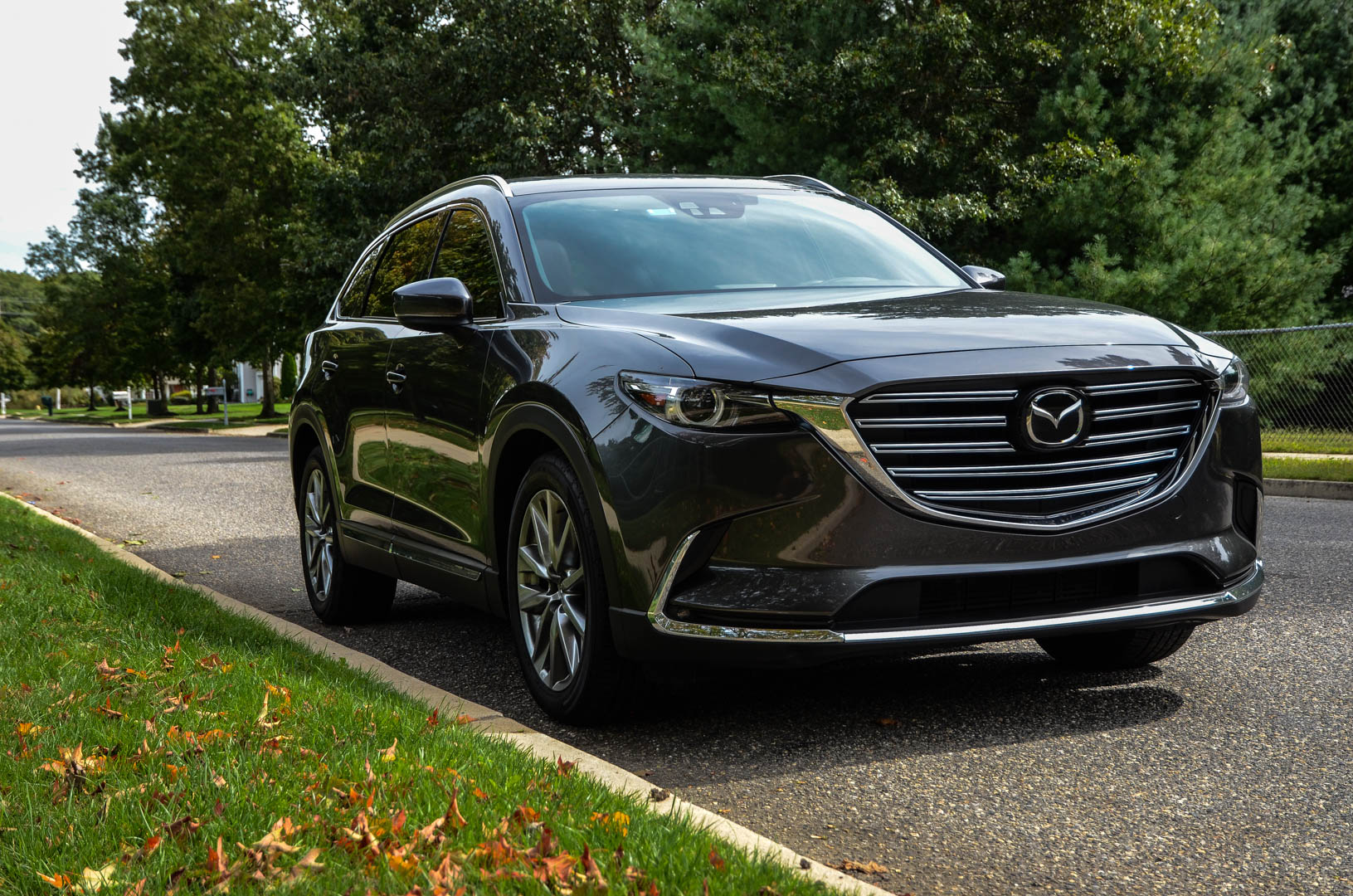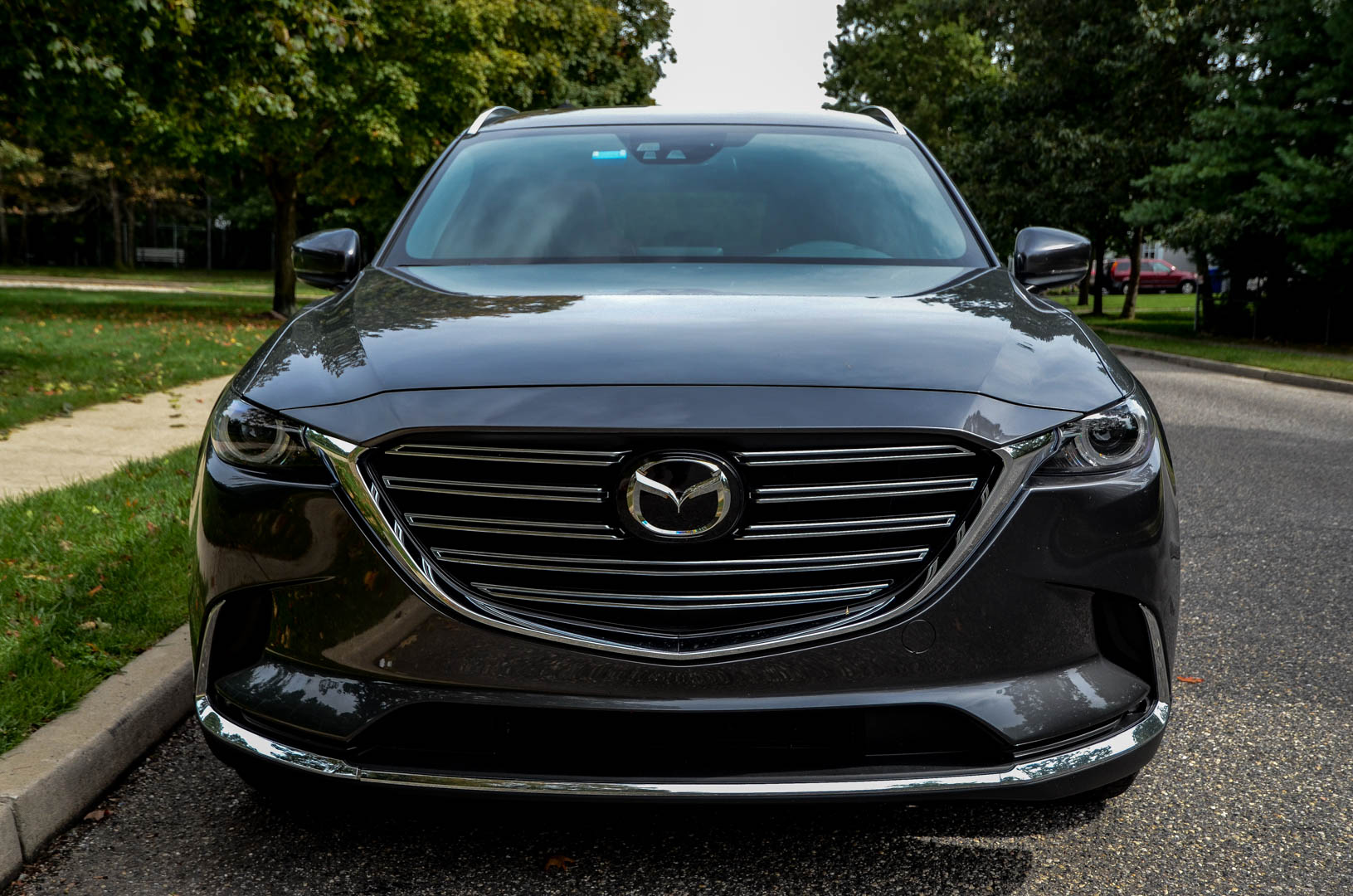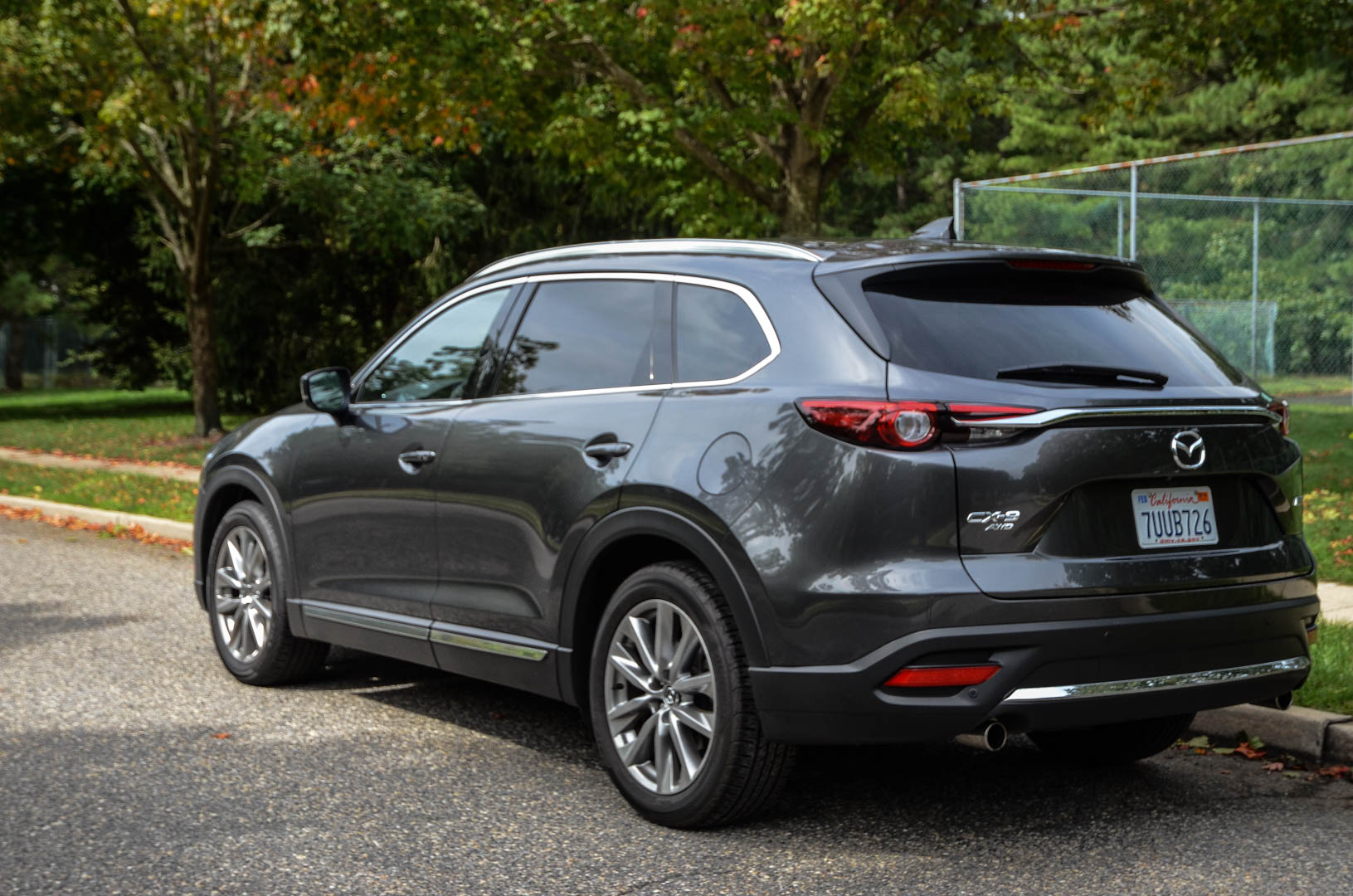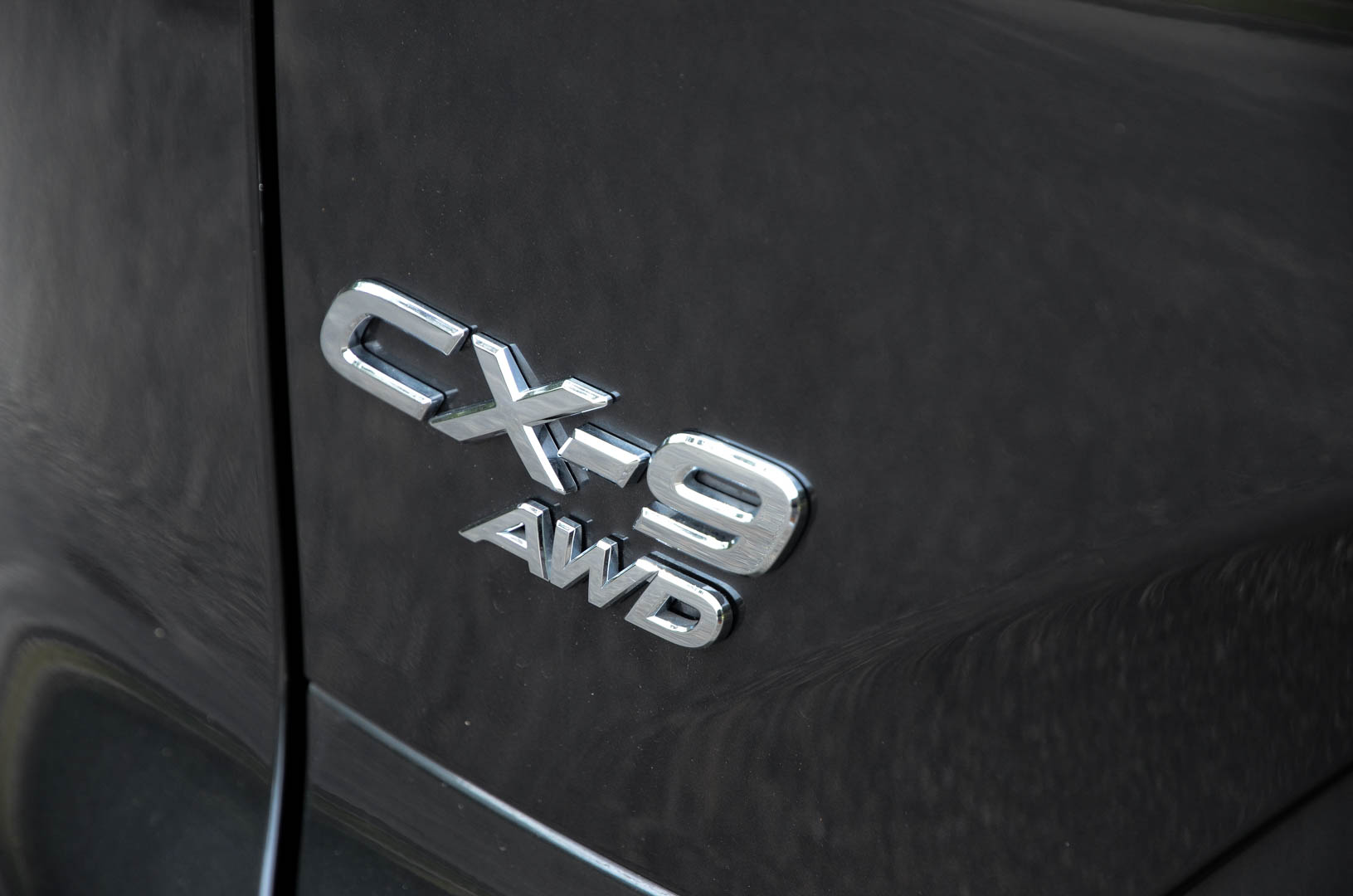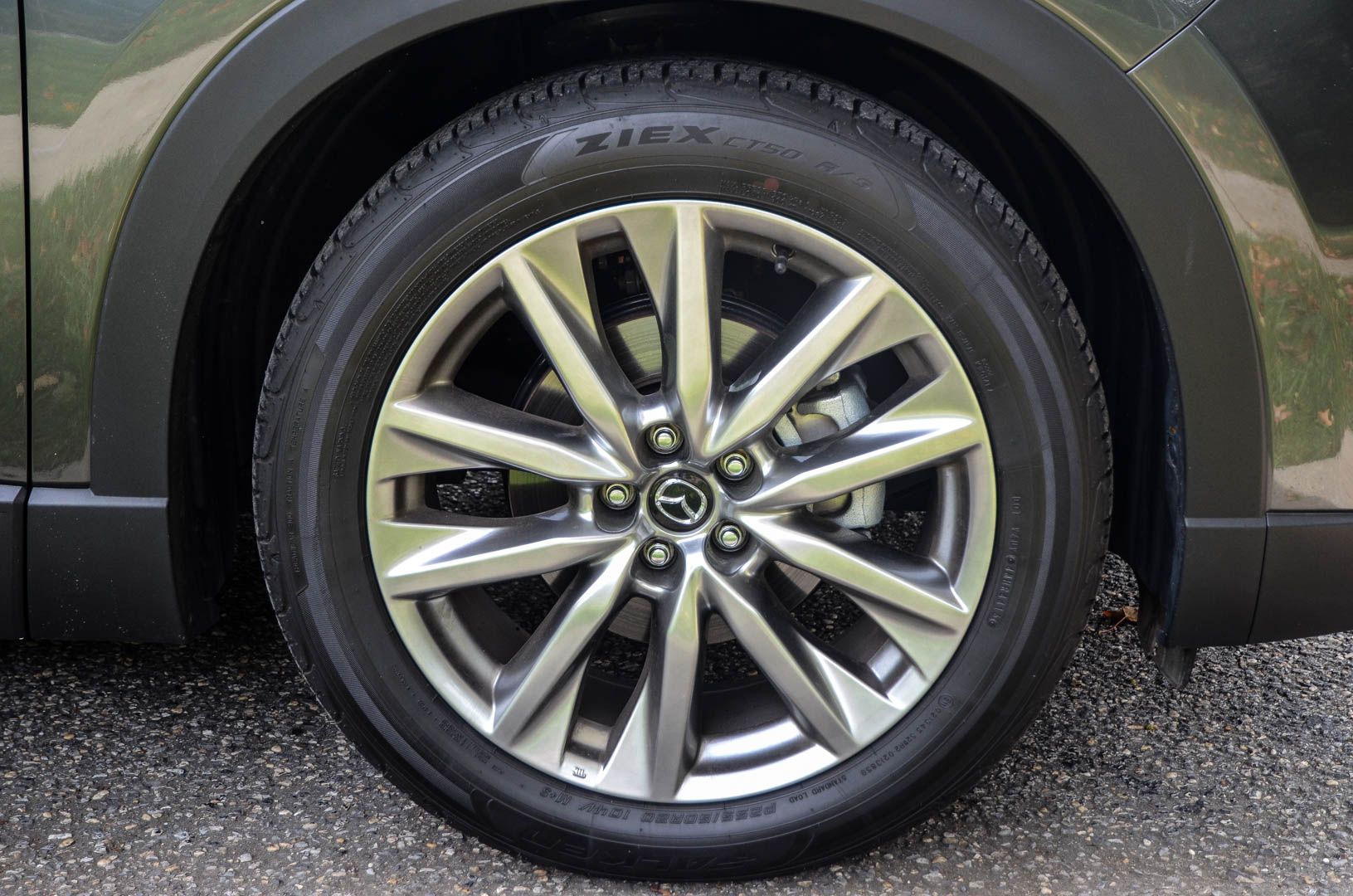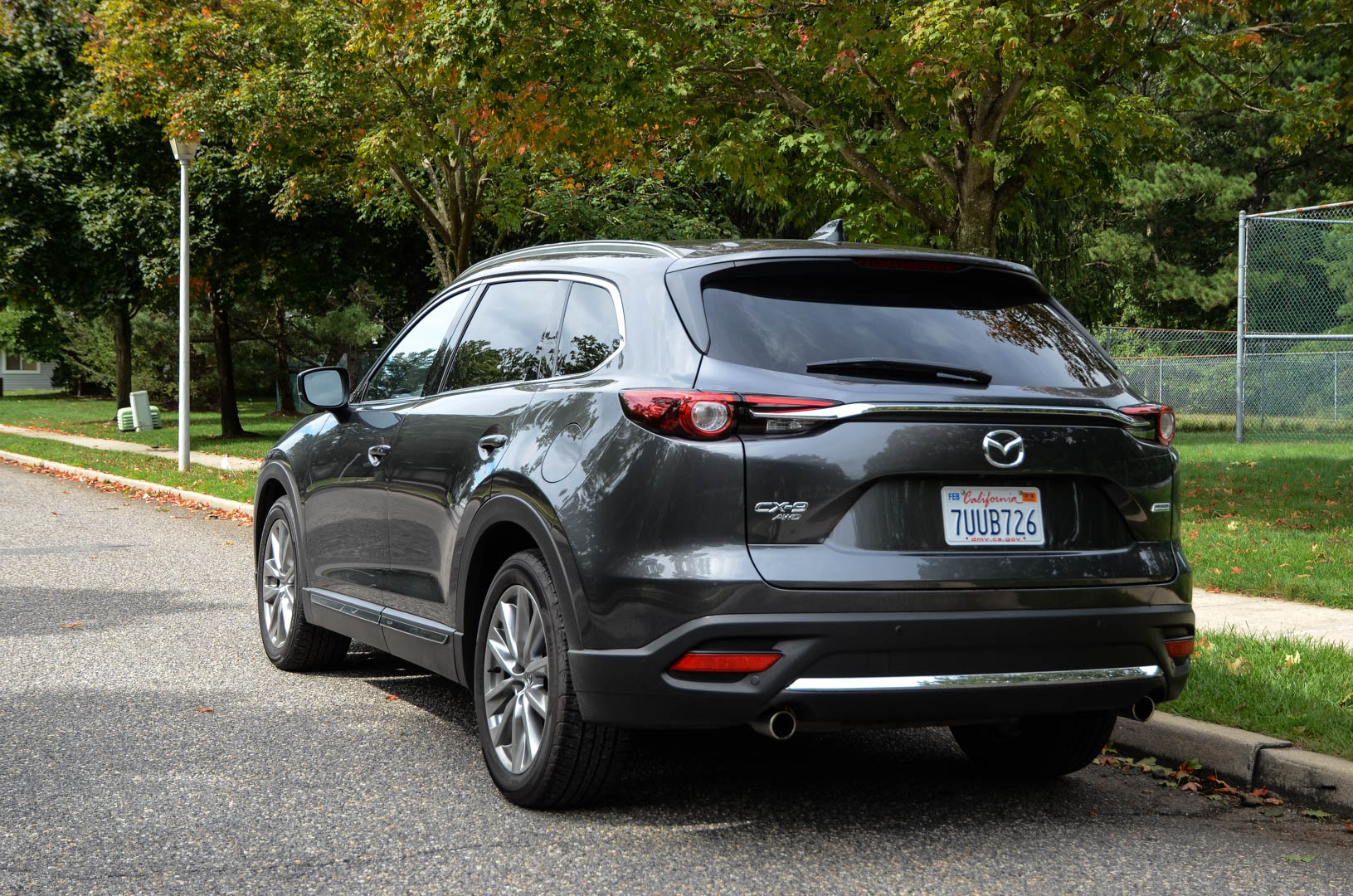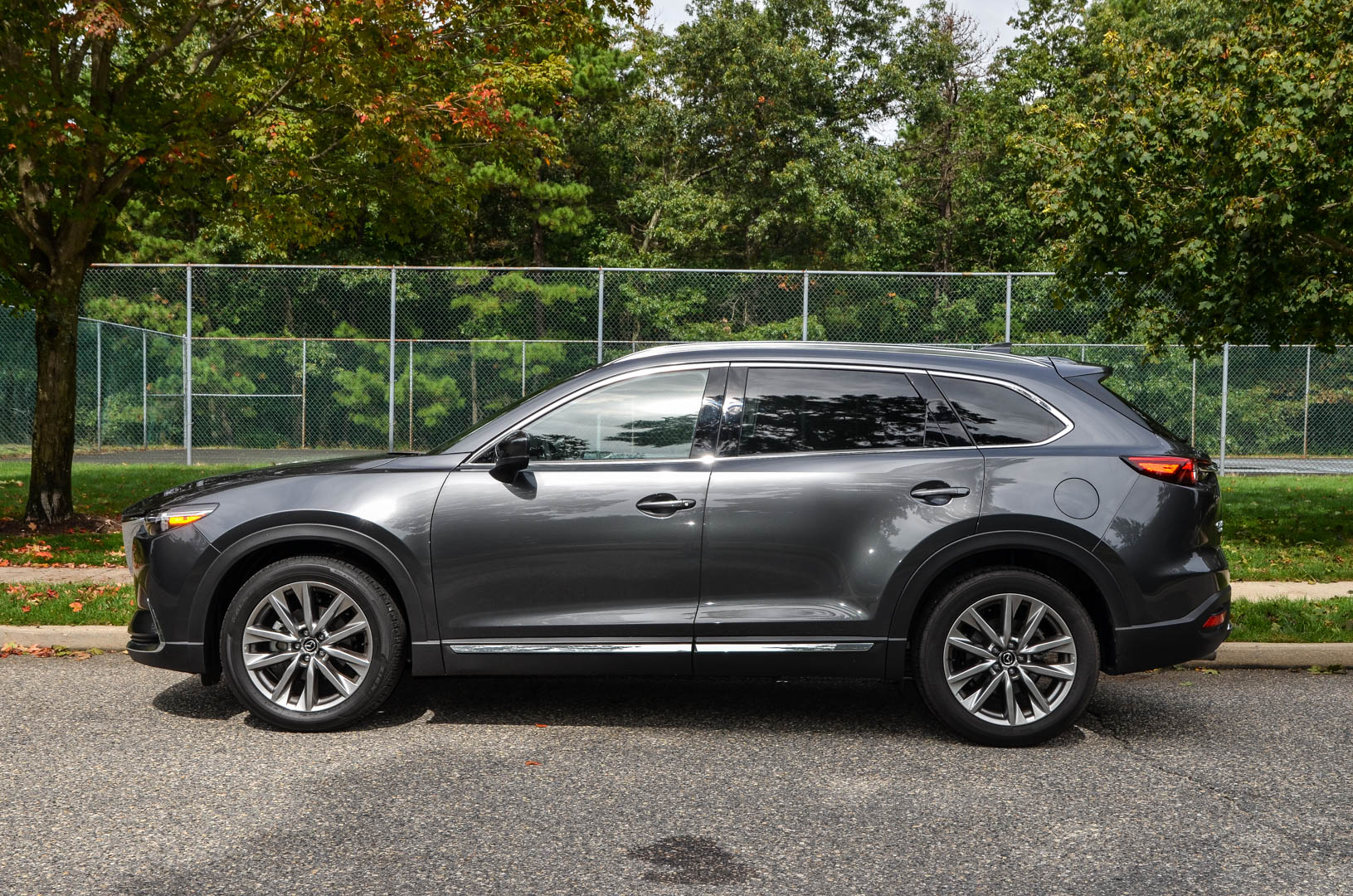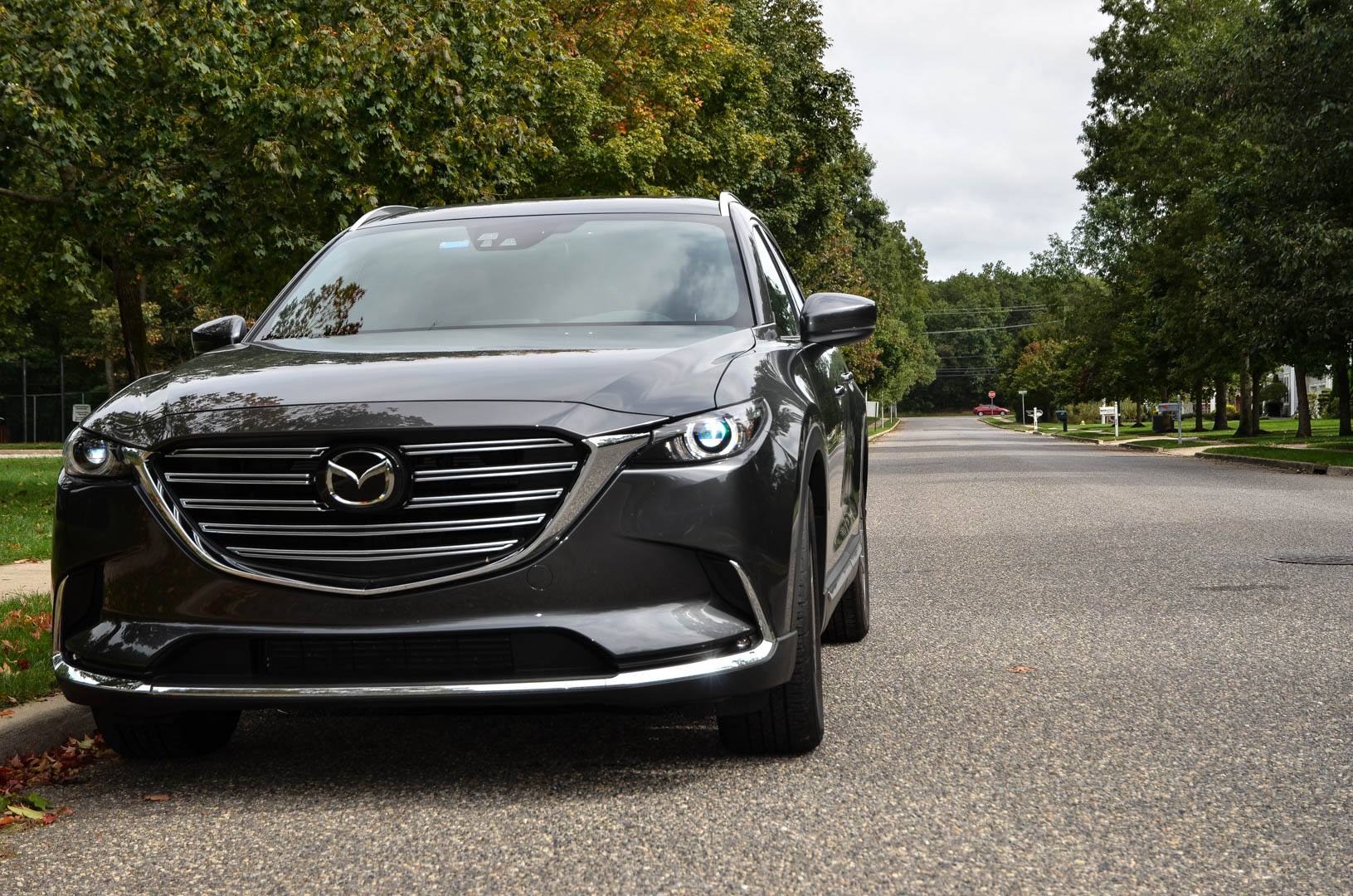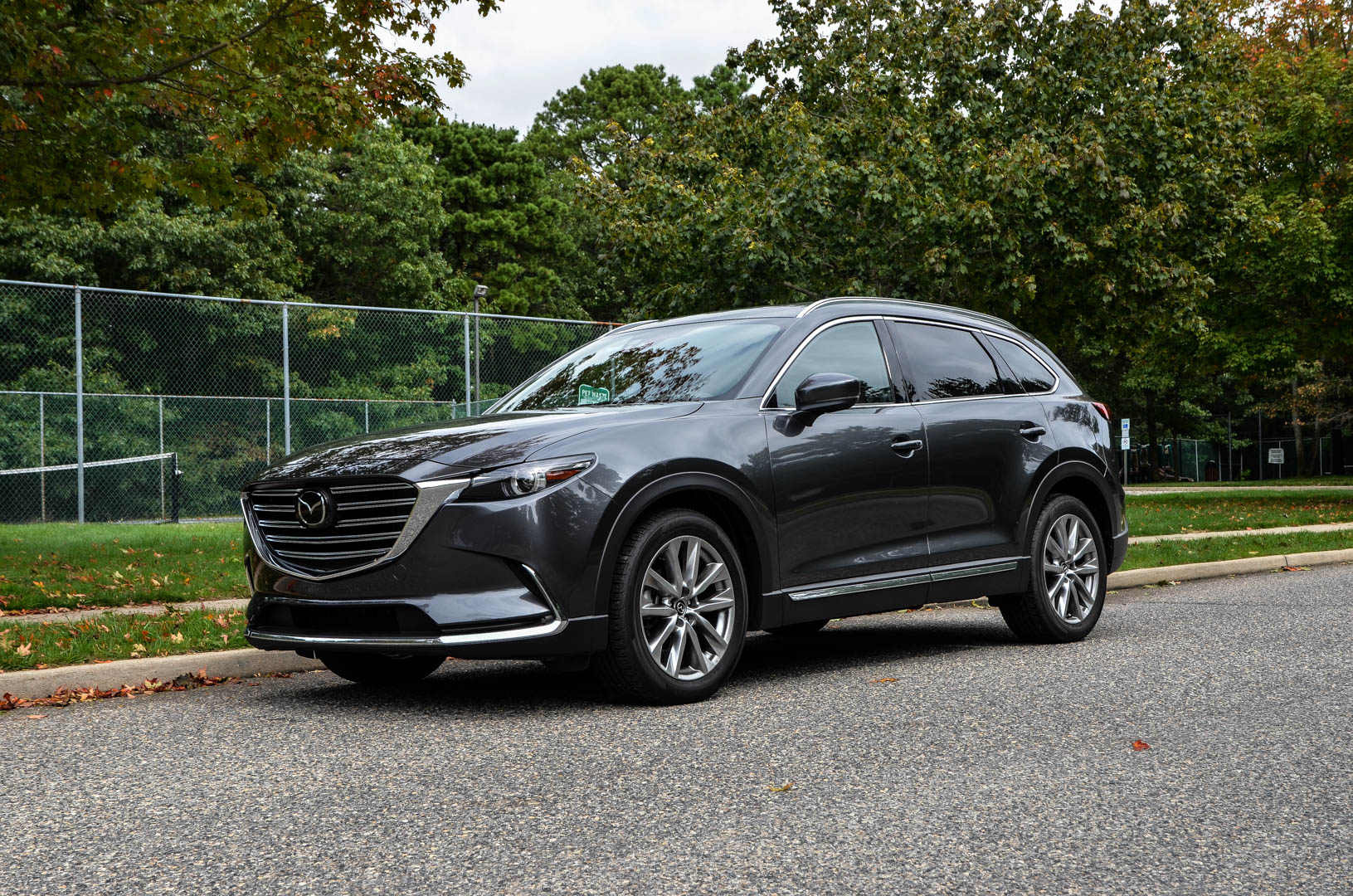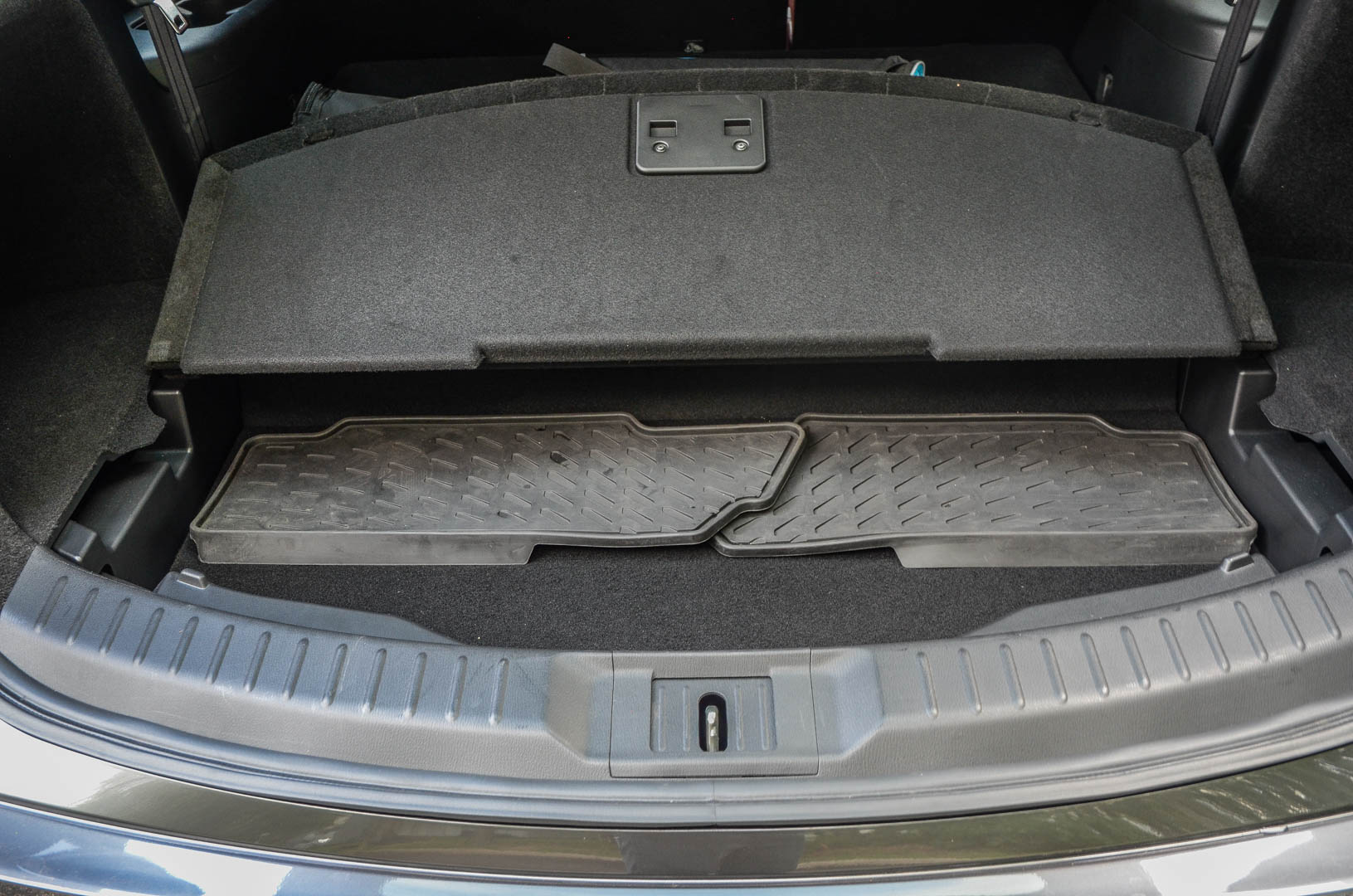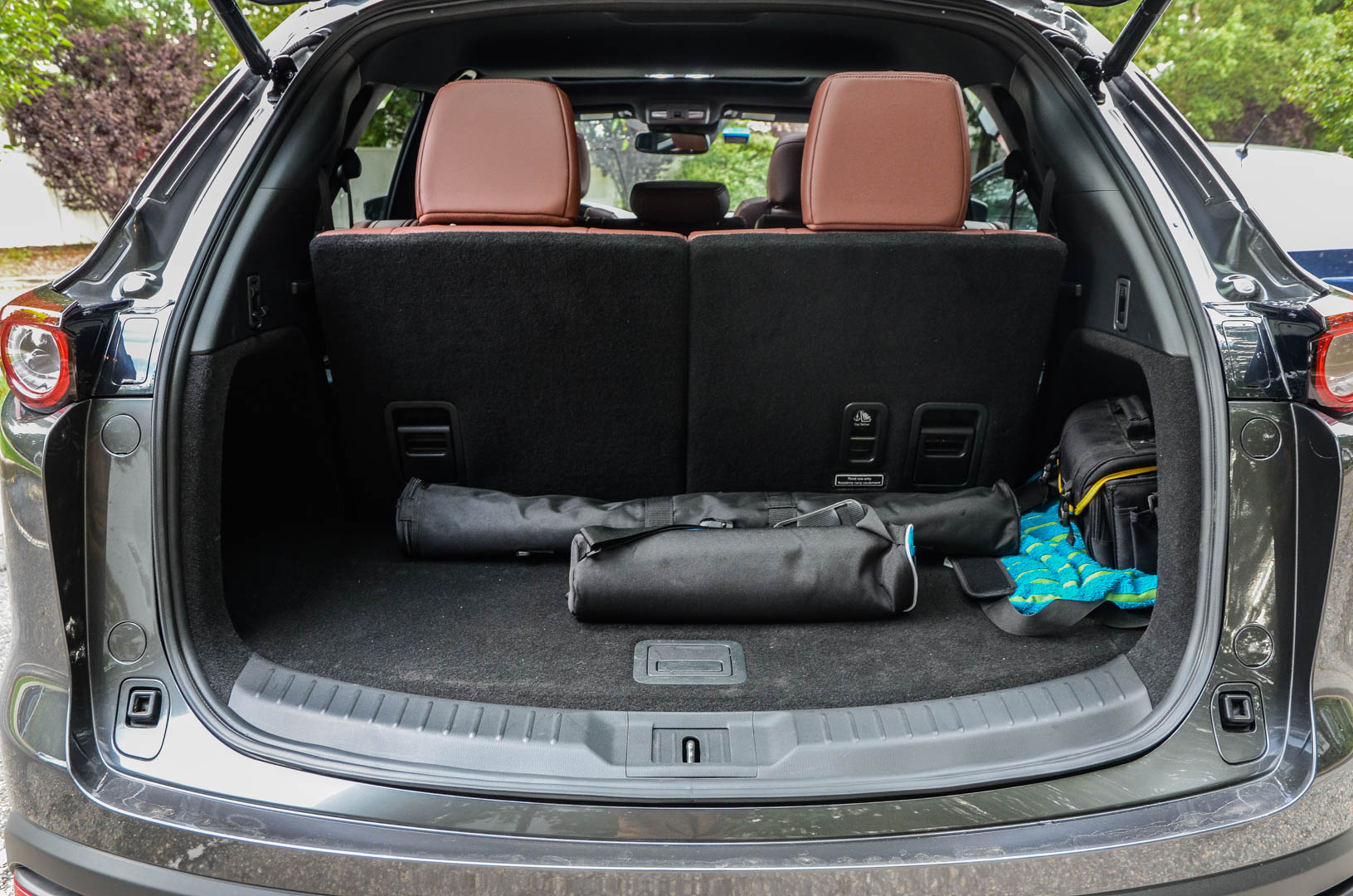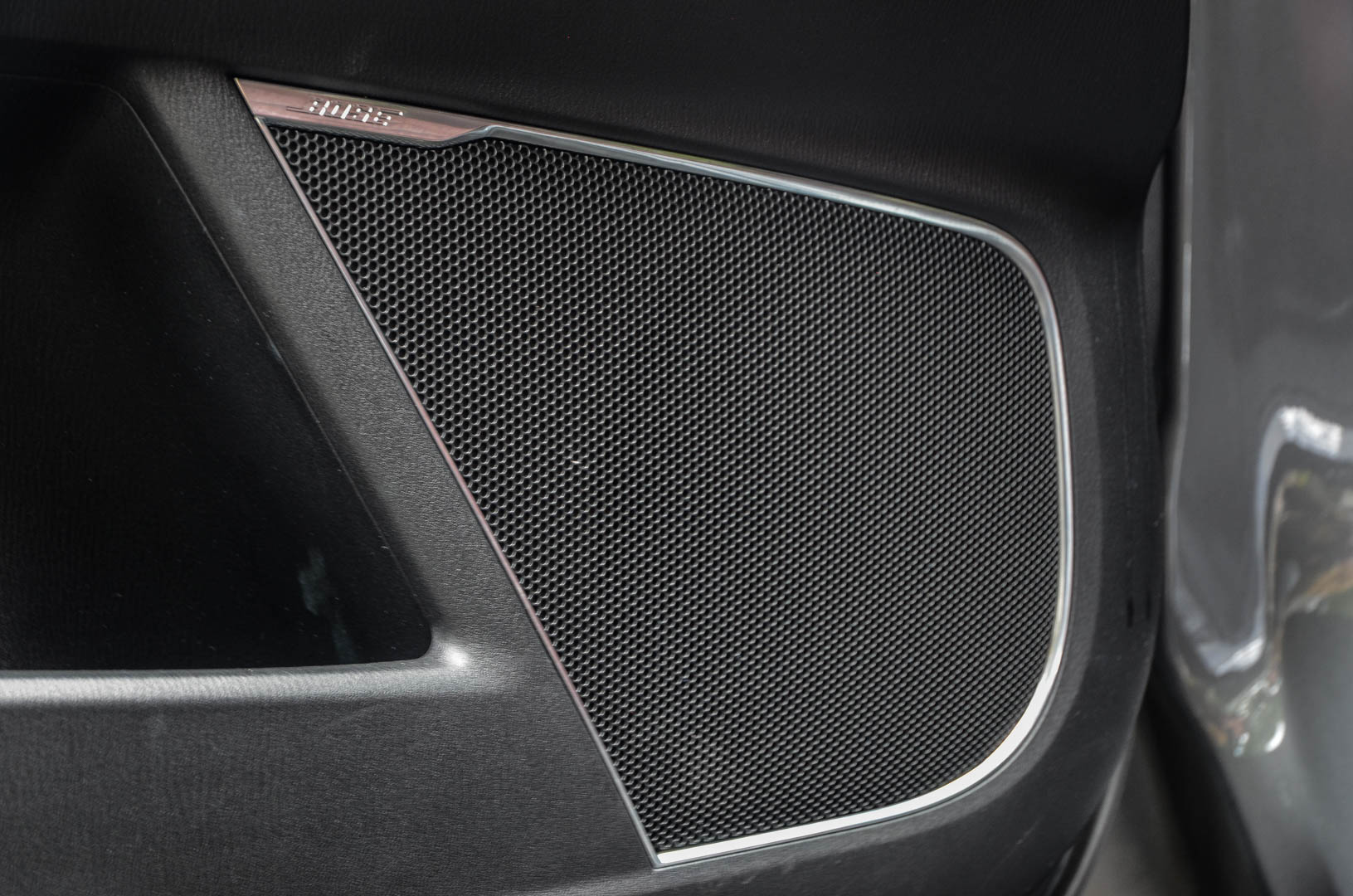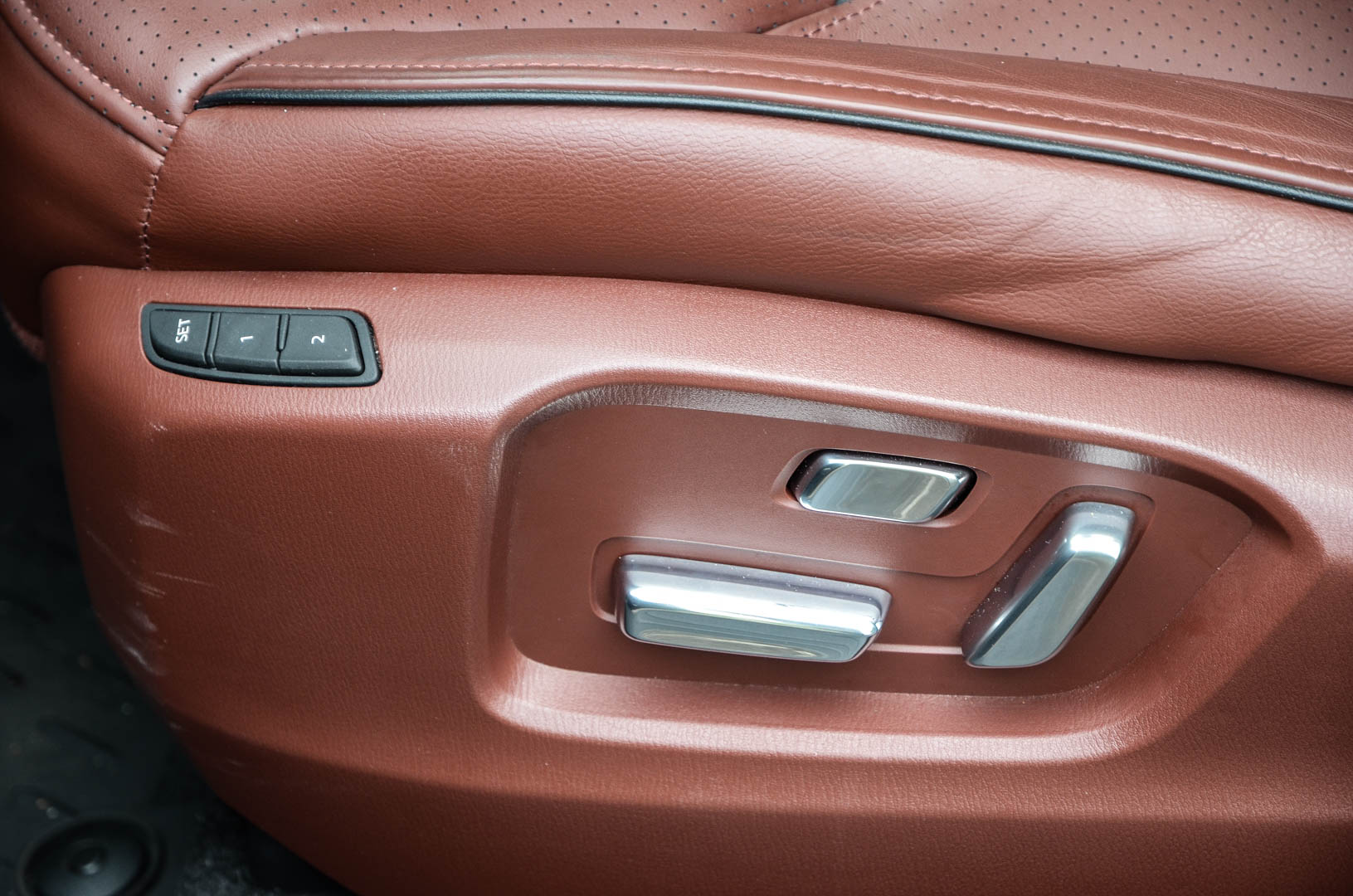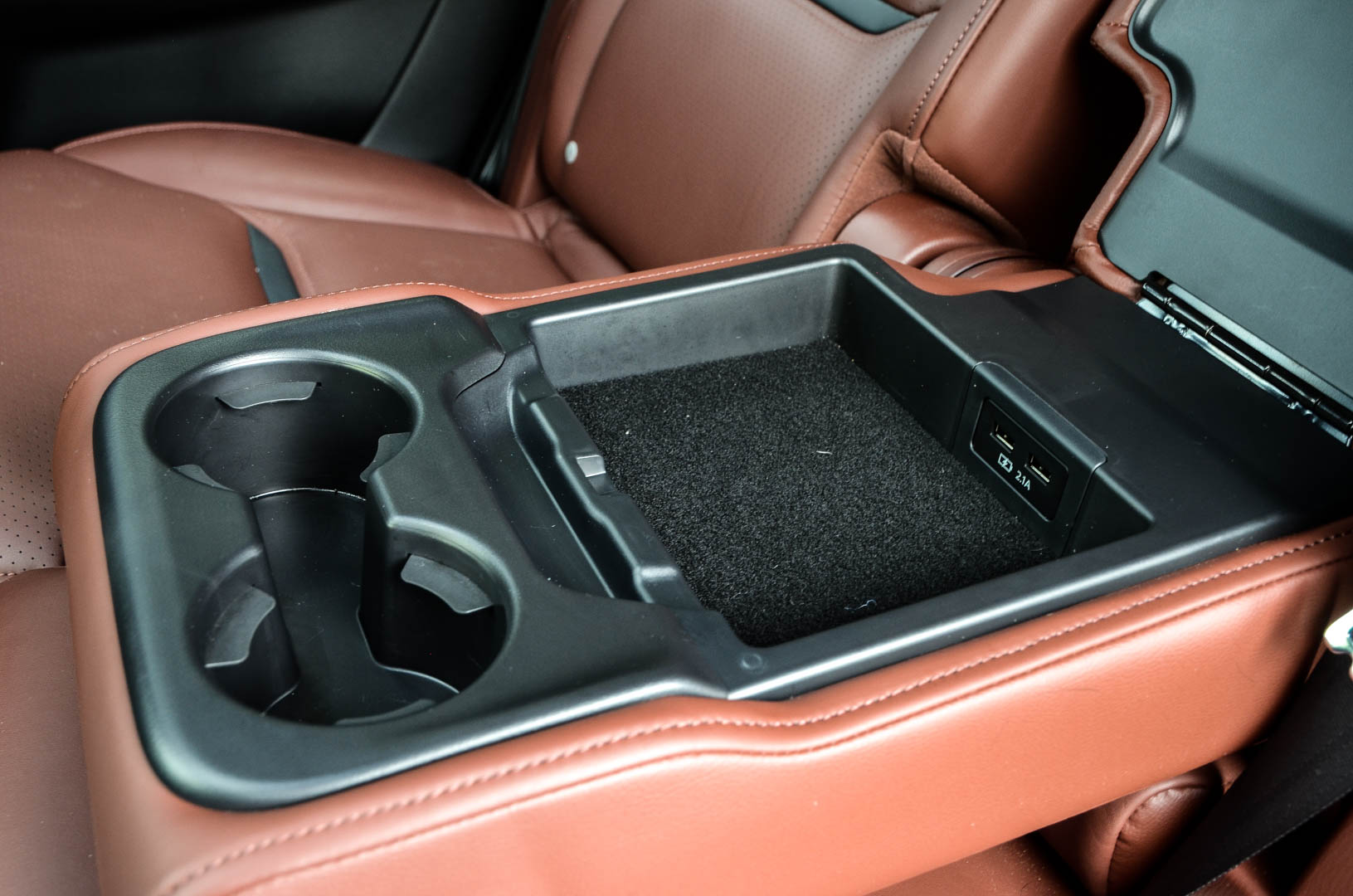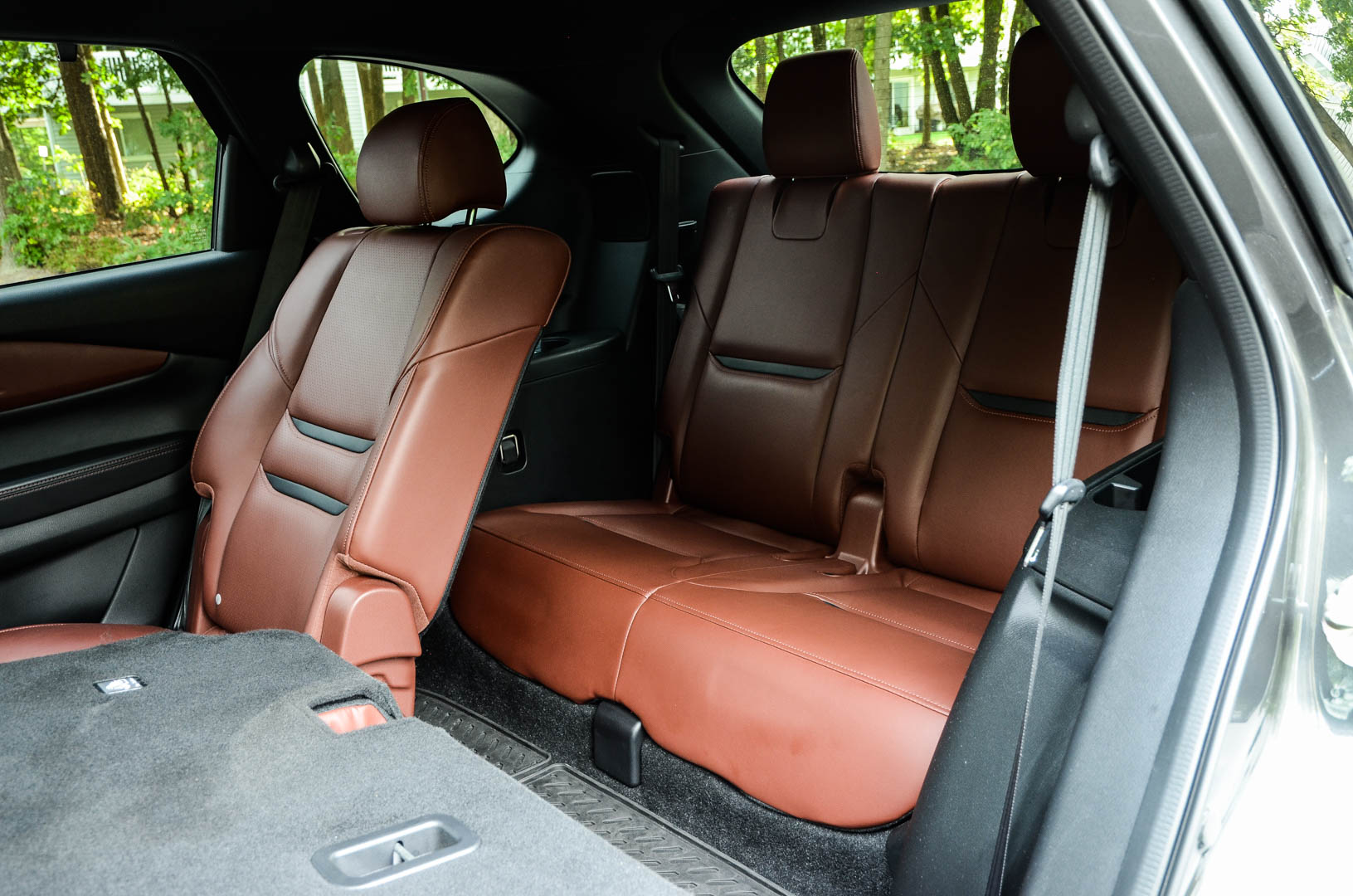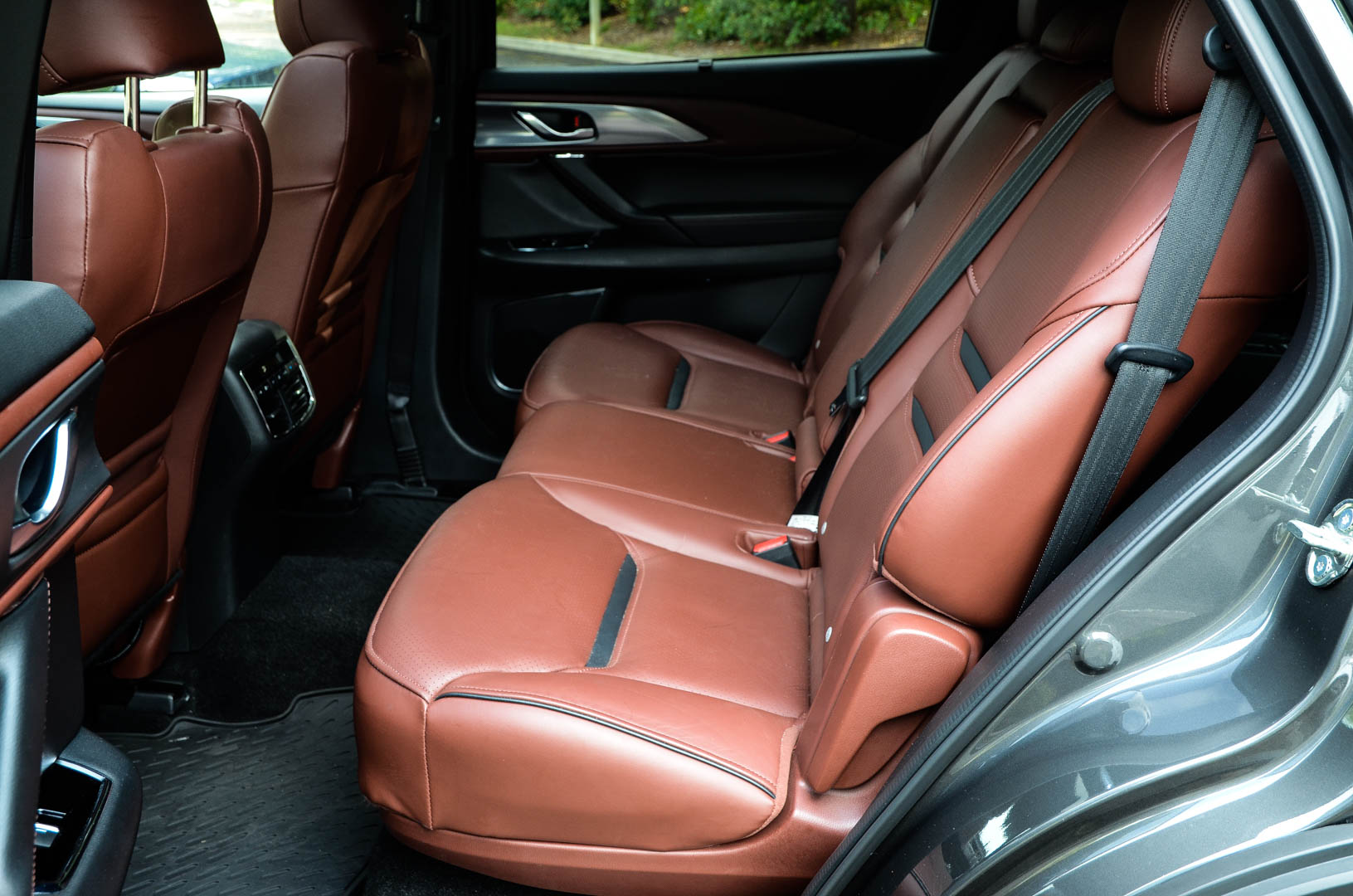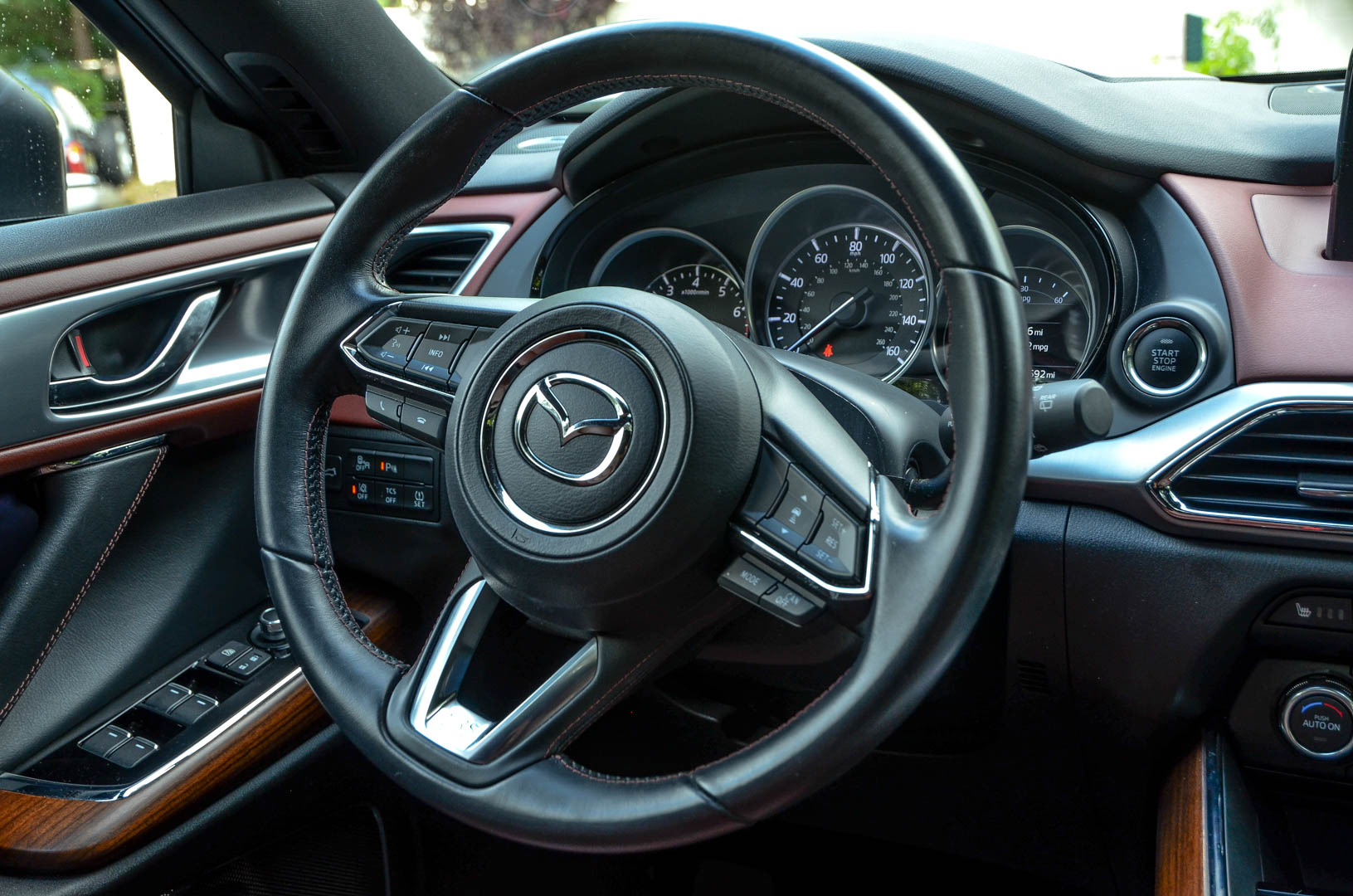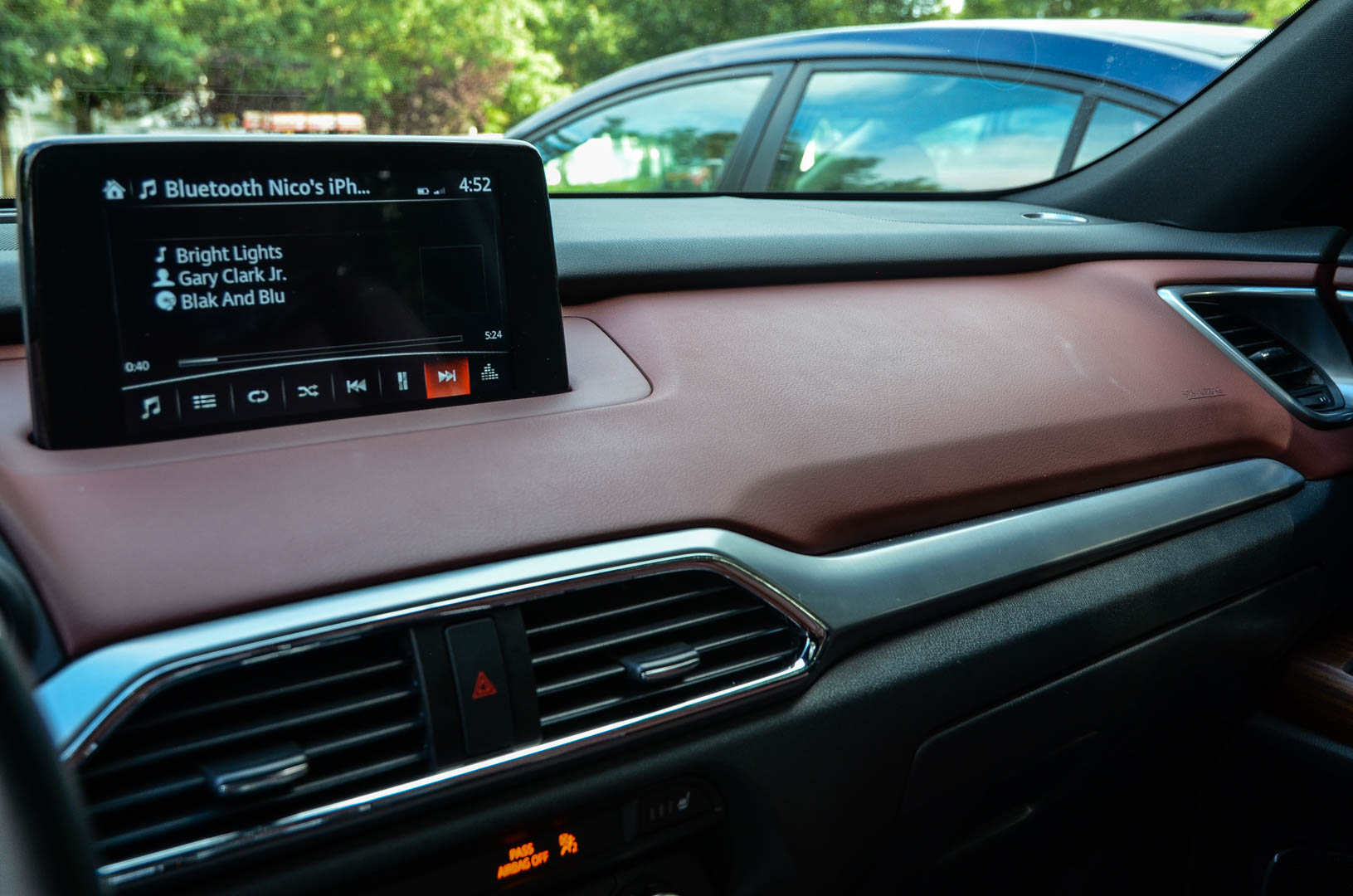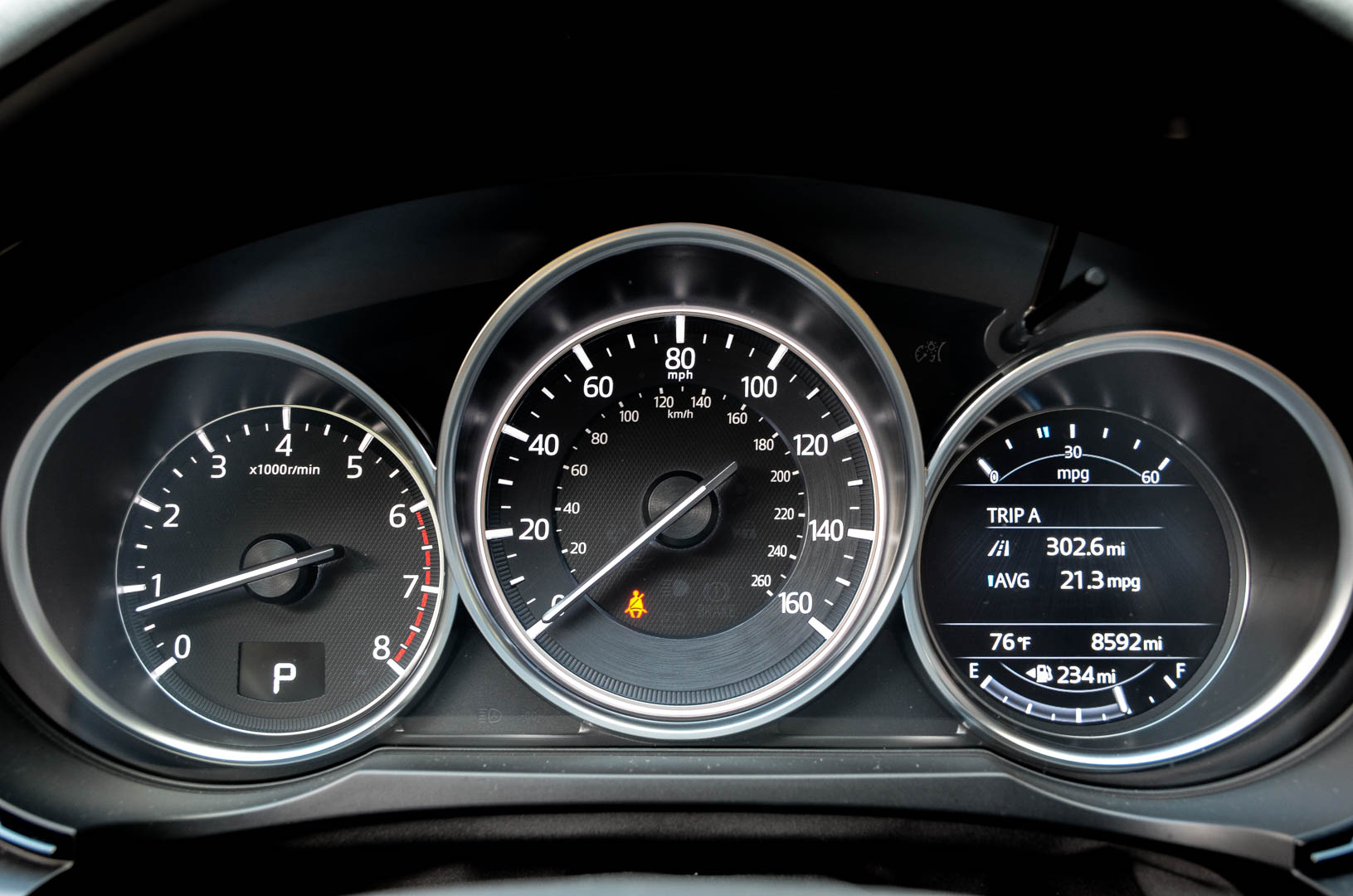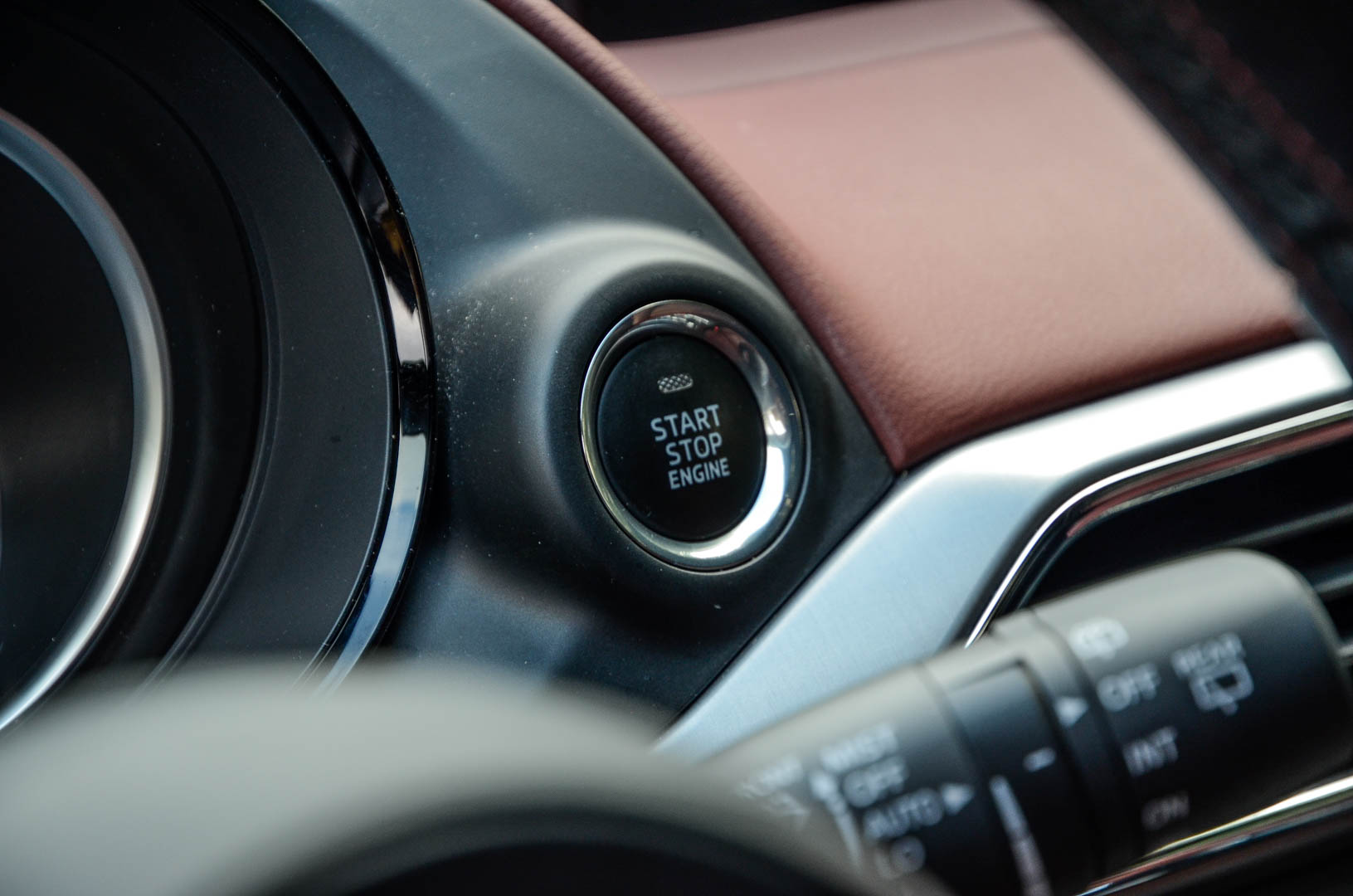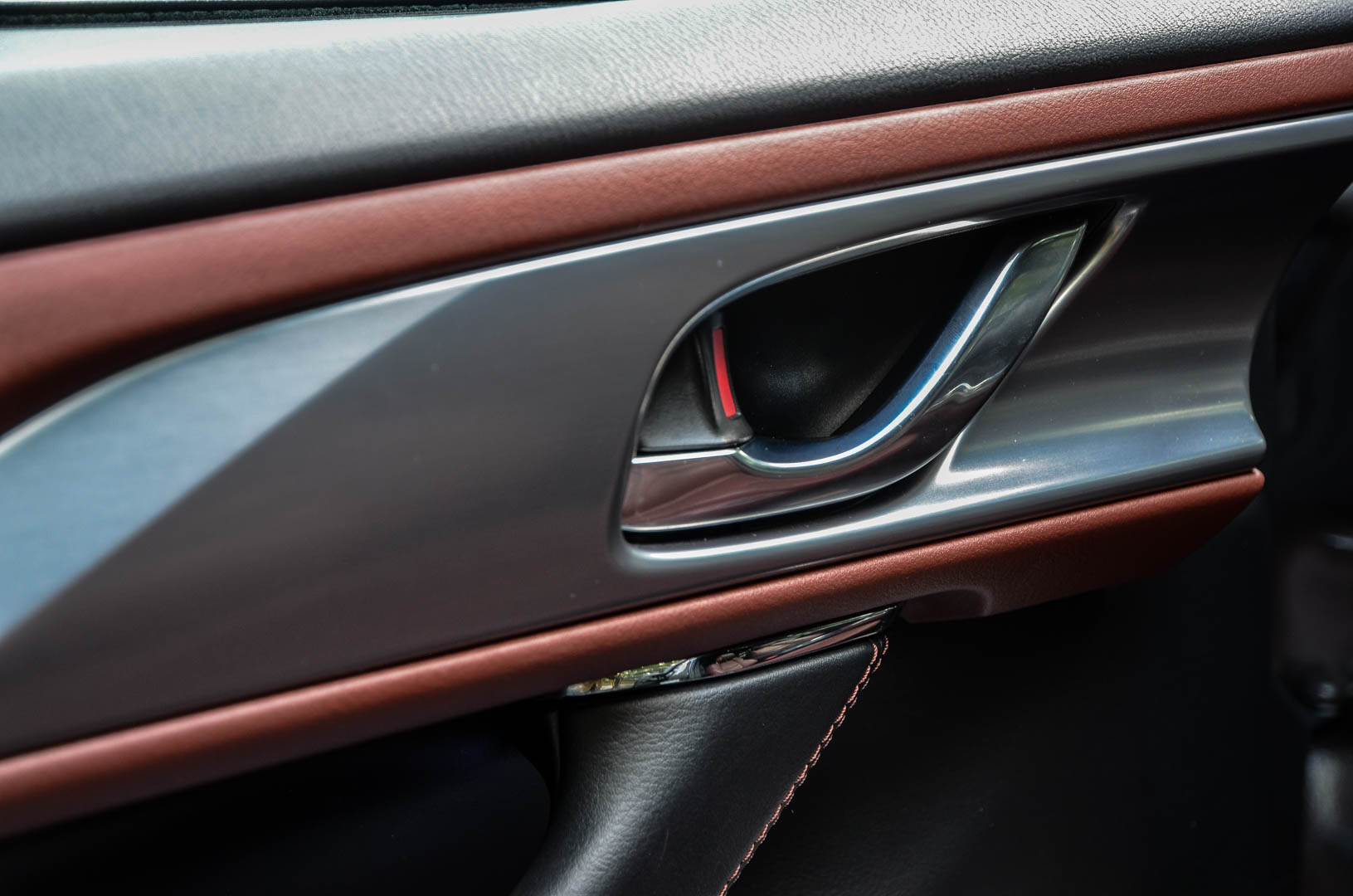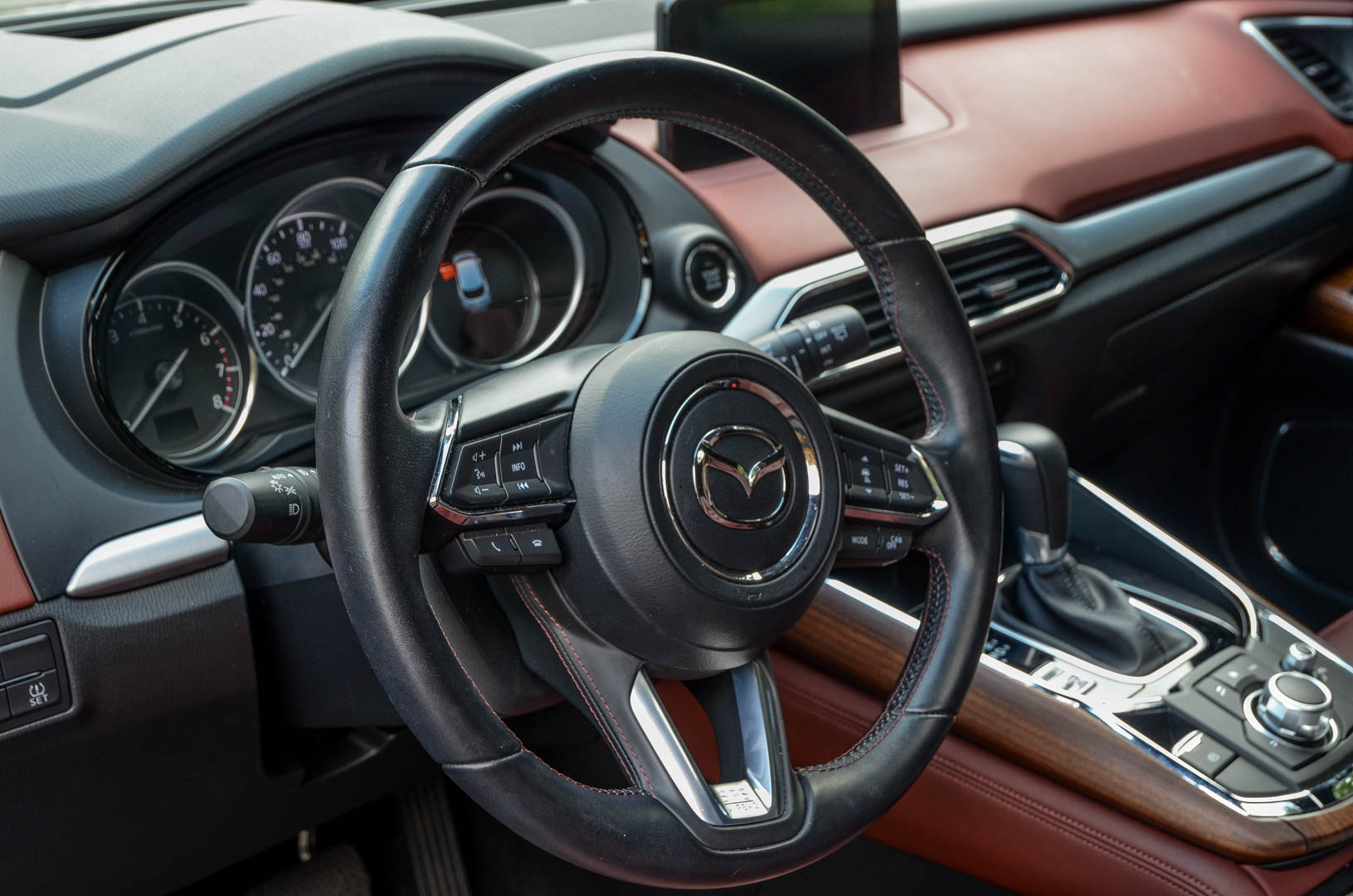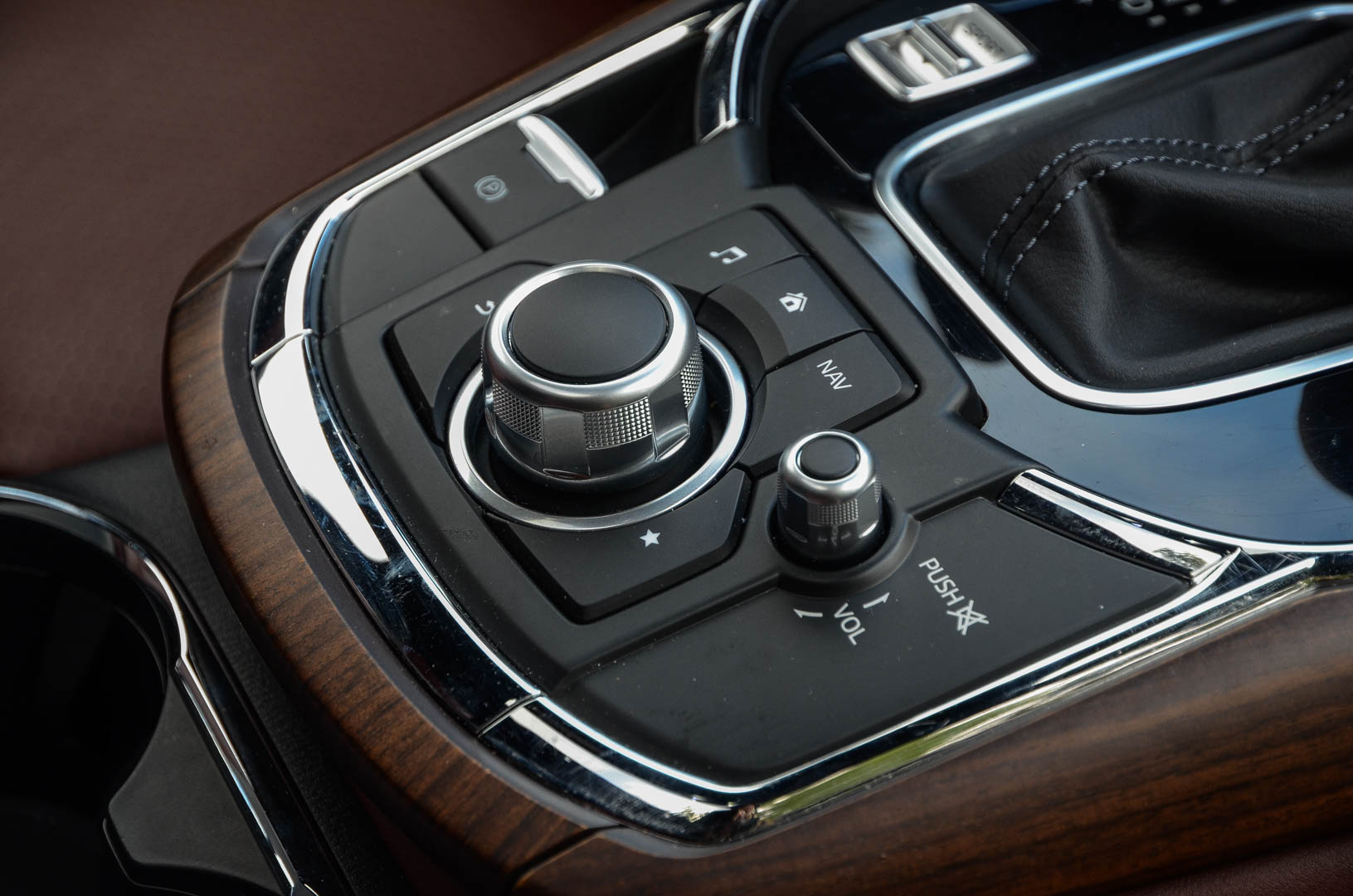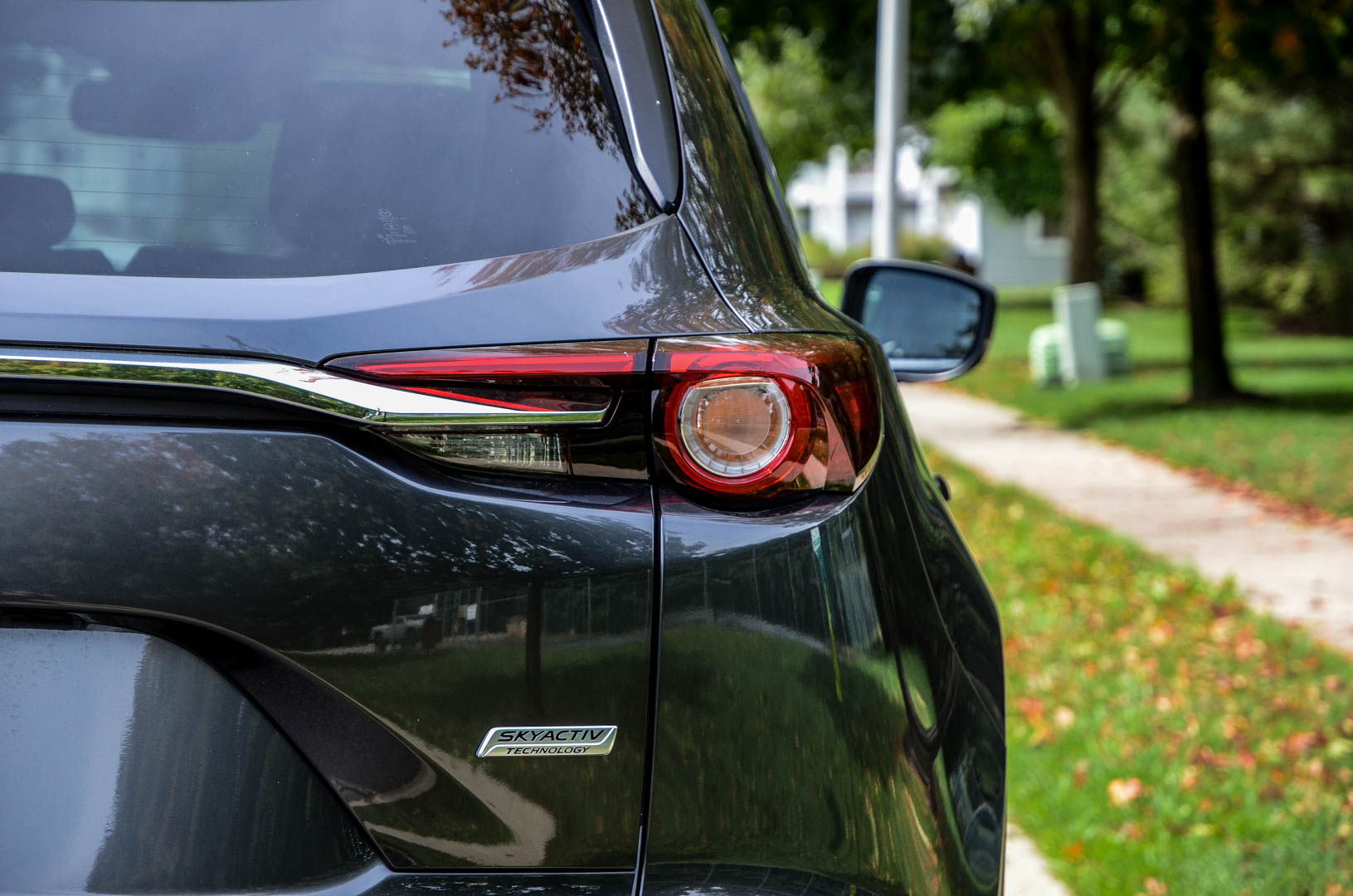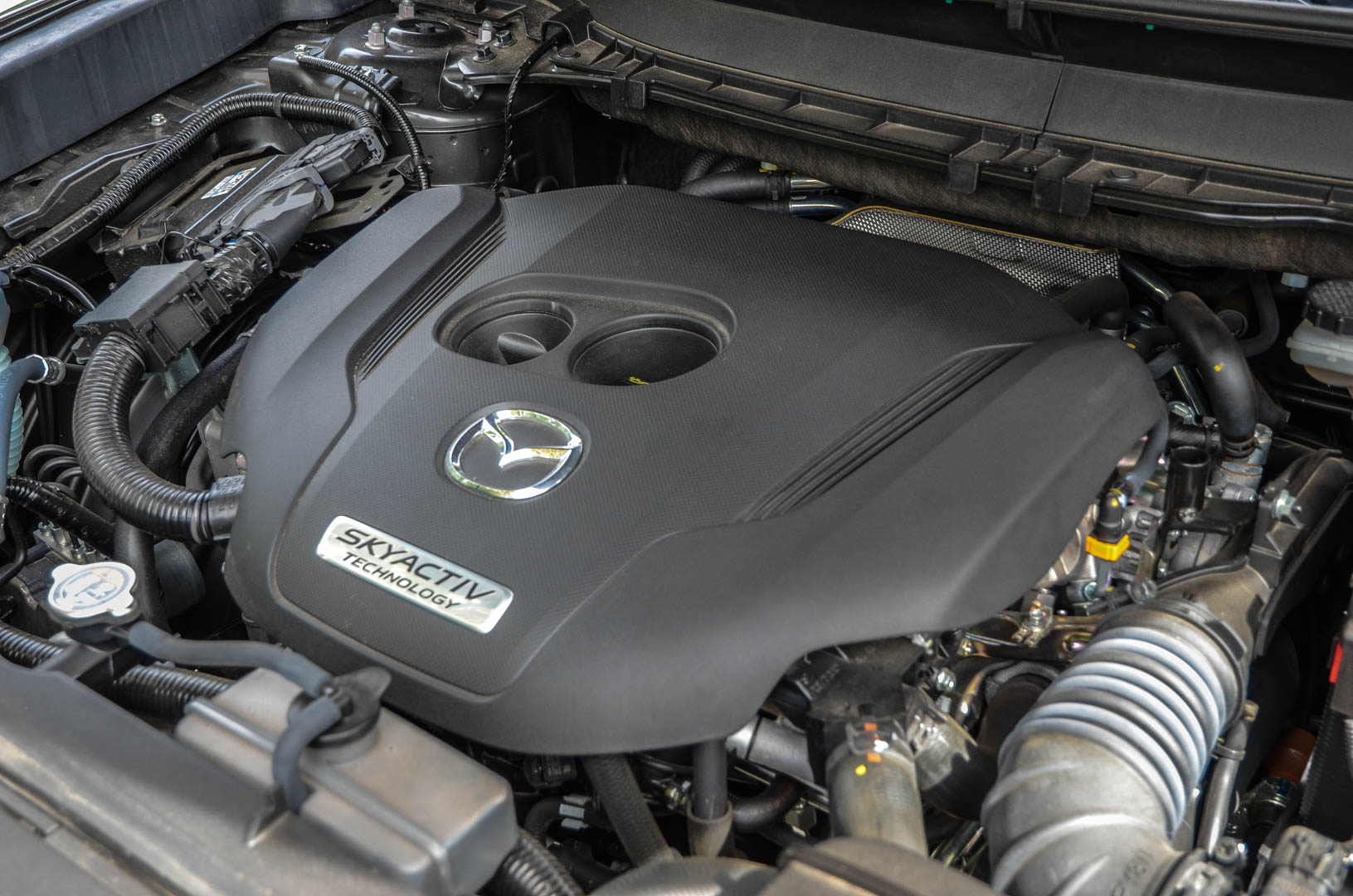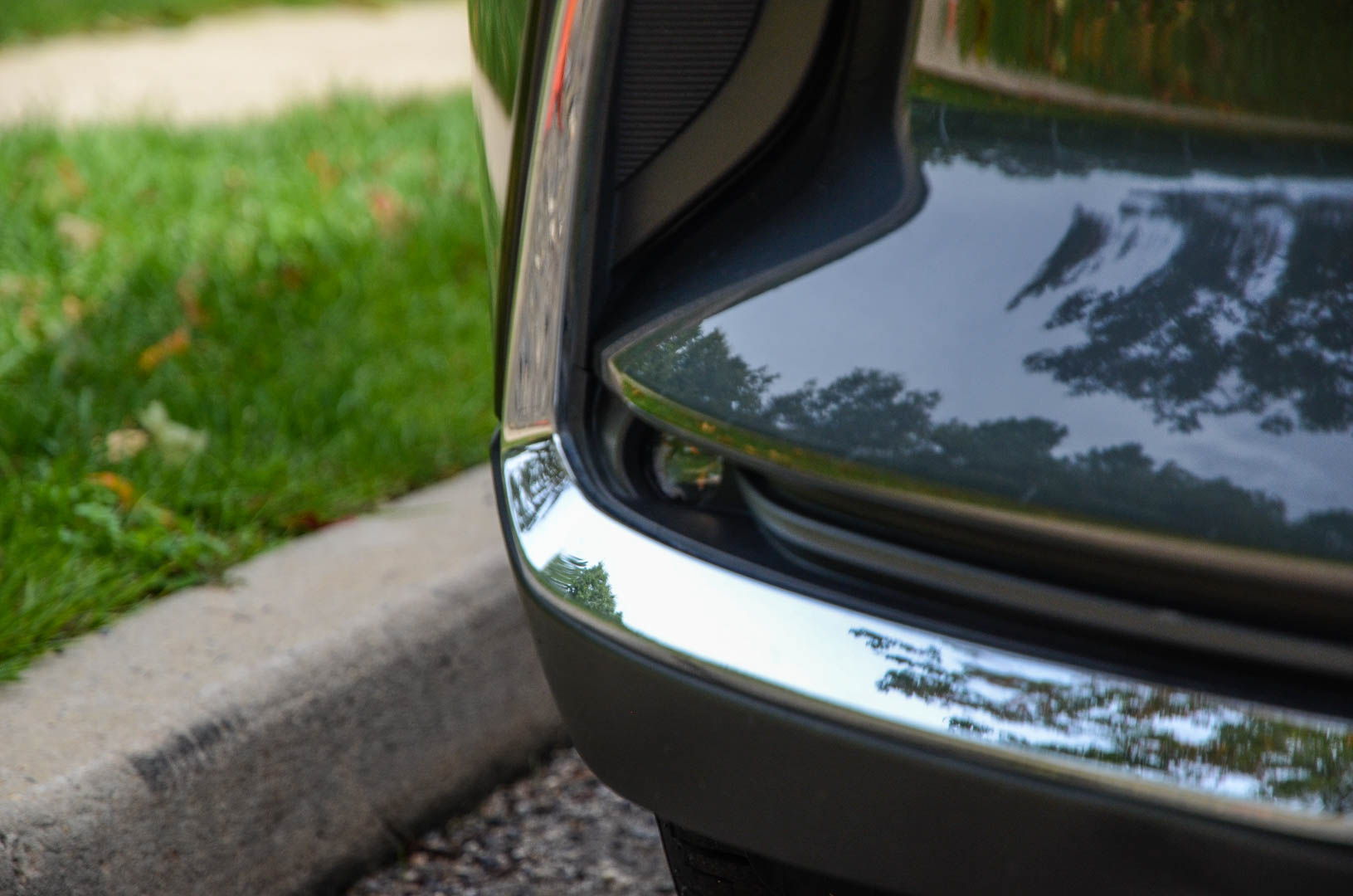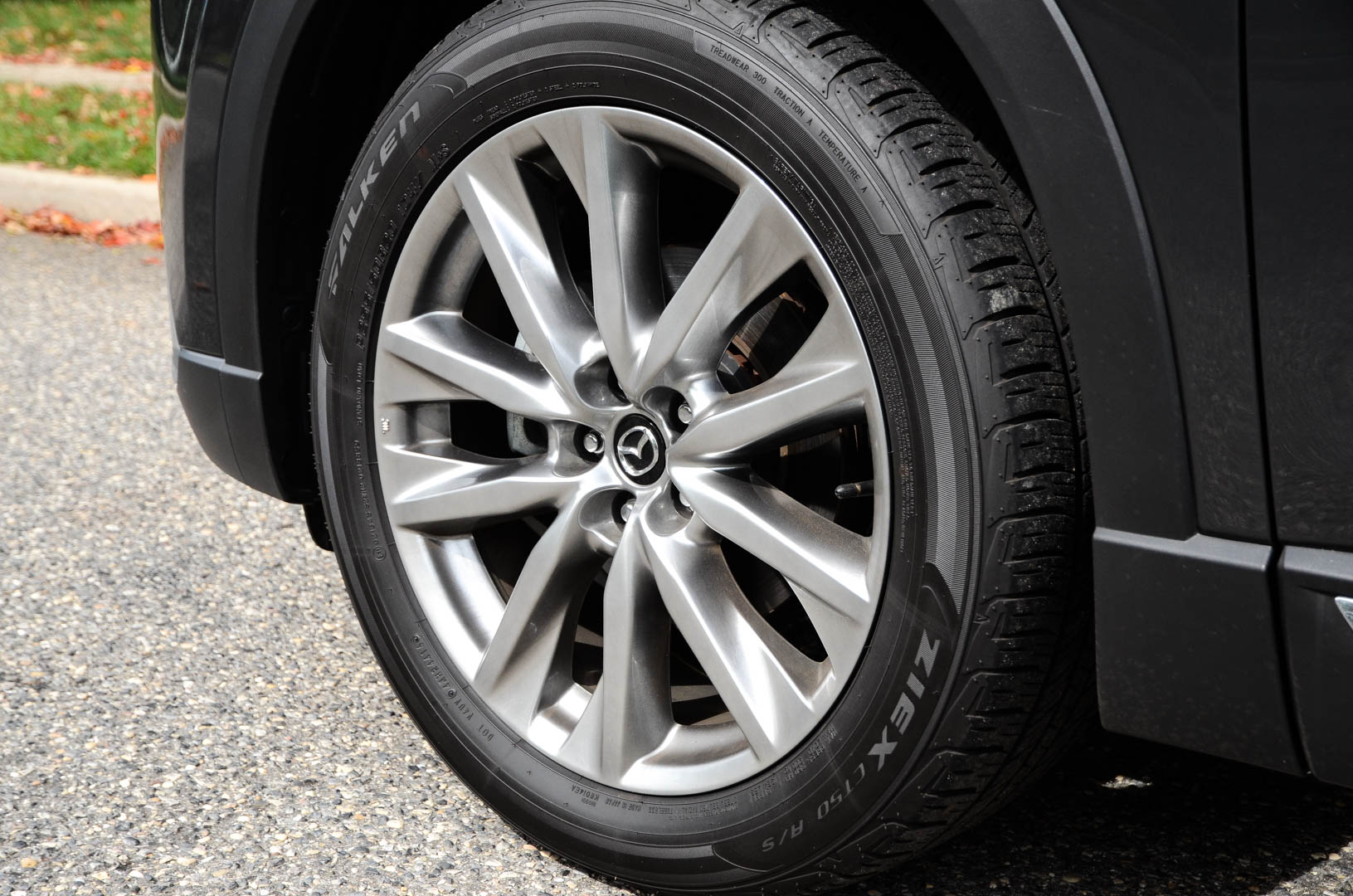Mazda is on a bit of a mission, as of late. With the introduction of the new Mazda CX-9 and CX-5, the small Japanese brand is trying hard to prove that its cars are more on par with premium brands than its traditional affordable competition. It’s for that exact reason that Mazda launched the CX-5 alongside the BMW X1, Audi Q3 and Lexus NX. Mazda wants to prove that its cars can compete with the best cars in the segment, regardless of price. It’s also for that reason that Mazda lent us a brand-new CX-9 for a week.
Our test car was a 2017 Mazda CX-9 Signature, which is the flagship of the Mazda brand. It’s the most expensive car the Japanese brand makes and it’s the most luxurious. Starting at $45,225 (after destination), the CX-9 Signature comes basically as-is. There are only four exterior color options, one interior color option and no other packages or options available, aside from silly things like rear cargo nets and wheel locks. Our tester was painted in Machine Grey Metallic and had Auburn Nappa Leather interior, the latter of which is the only choice of interior. After that, it’s as fully loaded as it gets and came with every possible technology that Mazda has to offer.
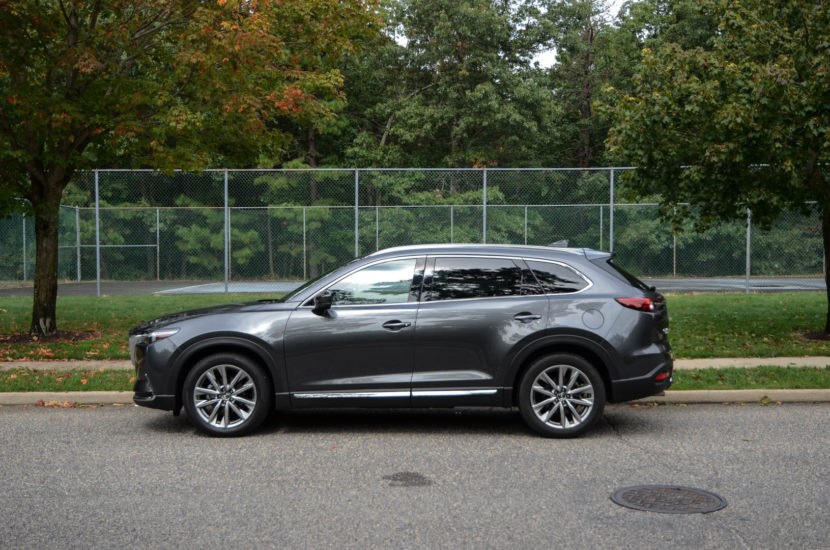
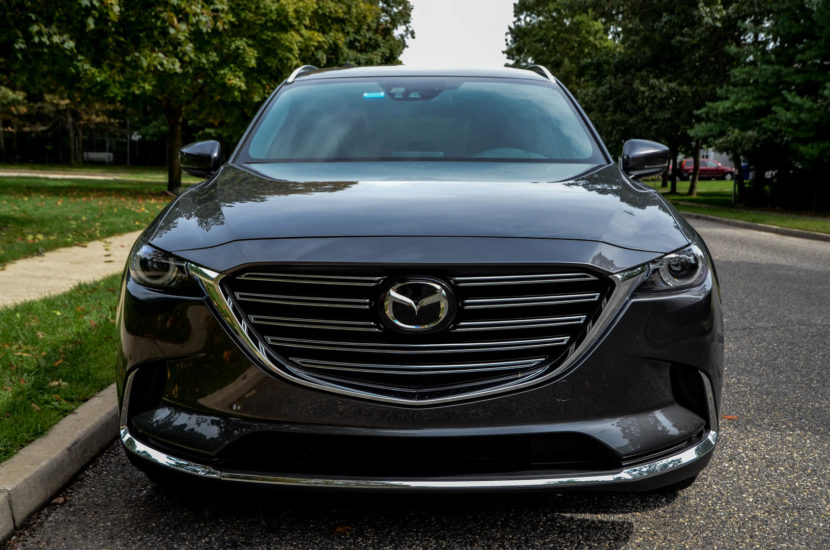
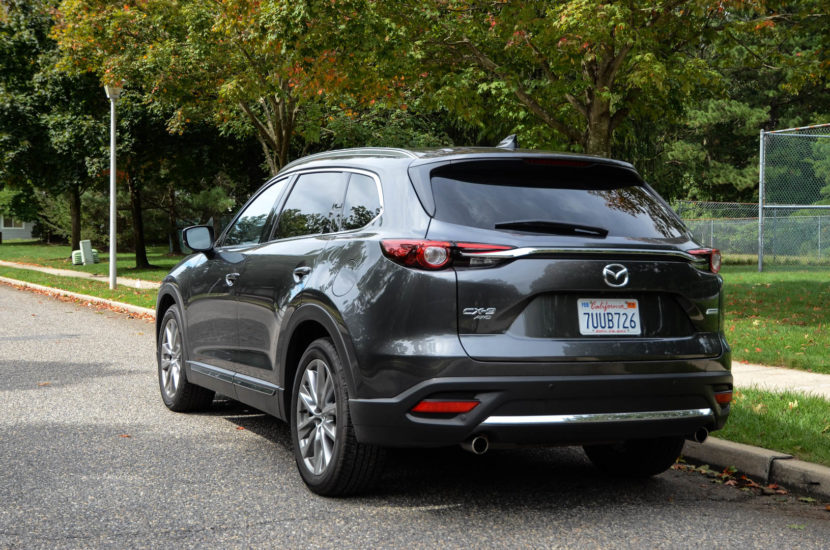
So it starts at around $45,000 and ends there as well. But the big question is whether or not the CX-9 Signature can offer a more affordable alternative to the BMW X5 or Mercedes-Benz GLE-Class?
From the outside, unfortunately, no one is going to associate the CX-9 with any of the more premium offerings from BMW or Mercedes-Benz. It’s not that the CX-9 is a bad looking car, it’s rather handsome, well proportioned and simple enough to look elegant. It even received a lot of compliments from family and friends but in a more “Wow, that’s a Mazda? Nice looking car”, rather than “Wow, that’s gorgeous”. It’s just not as expensive looking as something from Germany.
As a whole, it’s a good looking car. The front end looks a bit like a smiling sloth, as the massive smiley grille is flanked by really slim headlights, but it’s still a good looking car. Its exterior belies its cabin space, as well, as it looks big but not nearly as capacious as it is once you step inside.
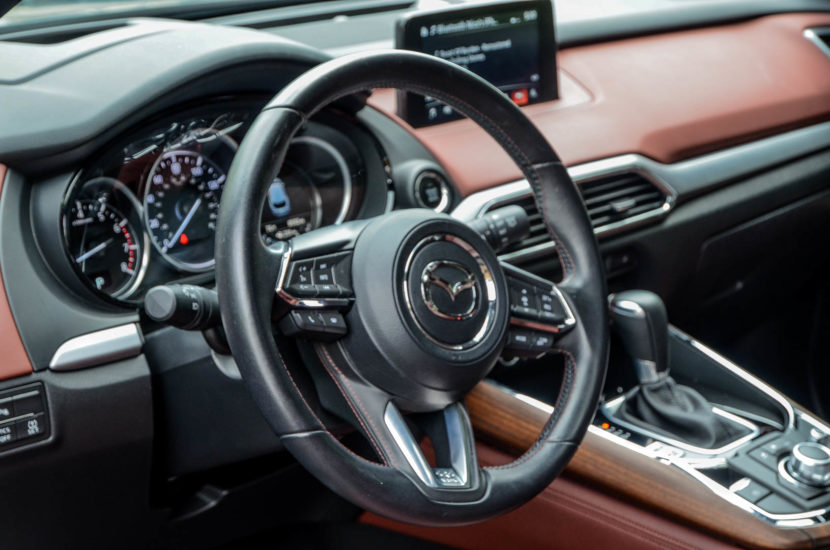
Fortunately, it gets a bit more luxurious and premium-feeling on the inside. The Auburn Nappa leather looks and feels premium and expensive. Thankfully it’s a good looking color scheme, in two-tone auburn and black, because it’s the only possible option. The seats are comfortable and manage to be both supple and supportive. Feel around the cabin and you’ll be met with mostly premium materials and solid build quality. Everything from about the knee up feels of high-quality and well-built. The dash, while looking like leather at first, is made of soft-touch plastics but at least it feels nice and feels sturdy. The wood trim around the center console and on the doors looks good, as well. While the quality and luxury aren’t up to par with even a base model BMW X5 or Mercedes GLE, it’s certainly better than its more traditional rivals and probably wouldn’t feel out of place in an Acura or Lexus.
There’s tons of space in all three rows. The third row is as-standard equipment on the CX-9 and it’s far large enough for small children and could even be serviceable for two adults for a a short trip. They also fold nice and flat into the floor for when you’re not using them and it’s easy enough to do. Just pull some handles on the back of the seats and push them down. The second row seats also slide for and aft and recline, so second row passengers can get very comfortable on long trips.
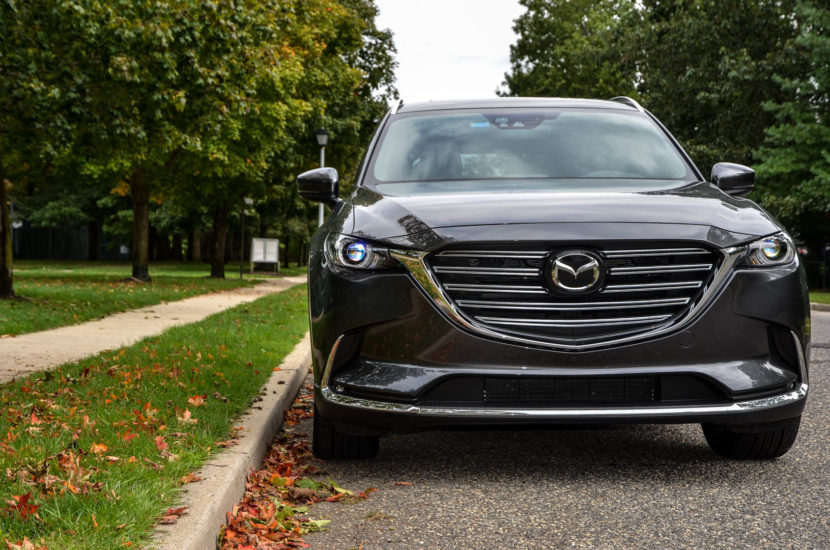
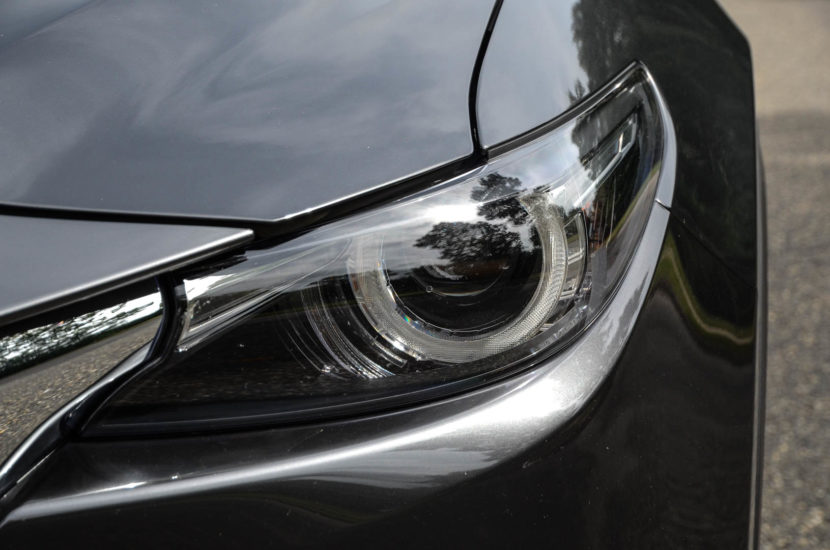
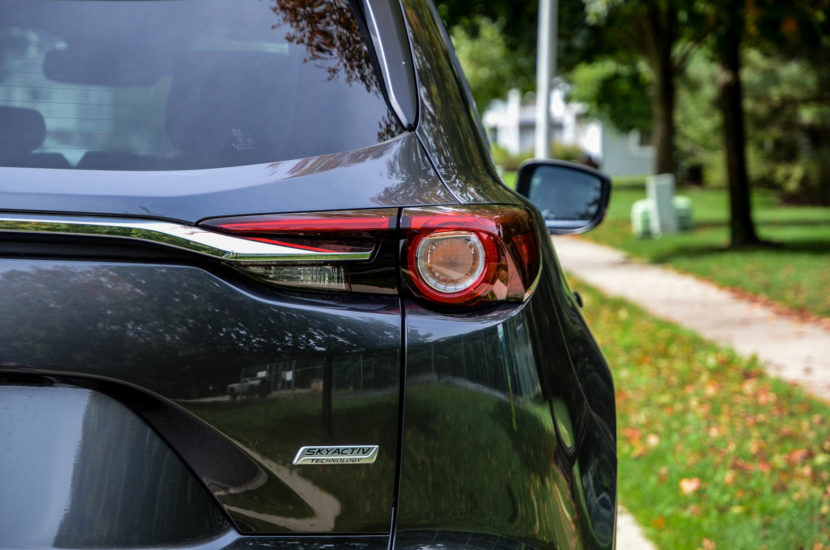
The interior design is nice and fresh, though. I really like the dash layout, as it looks modern and simple. Mazda claims that it spends most of its time studying humans and the way our bodies work, so as to make a cabin as comfortable and intuitive as possible. I’m inclined to believe that as every modern Mazda I’ve been in feels spot-on. The Mazda MX-5 was a masterclass in touch points and driver controls. I won’t go as far as to say the CX-9 feels like a big MX-5 but it definitely feels like it’s been designed by the same people. The driving position is excellent, with easy ingress and egress but also a high enough seating position for an SUV. The steering wheel is placed perfectly for an SUV and the pedals and shift lever are all placed exactly where they should be. Little stuff, I know, but it shows the attention to detail Mazda takes in making its driver feel comfortable.
I did have a few complaints inside, though. The steering wheel looks great and I loved it on the MX-5, but it’s too small and thin for an SUV. It sort of felt like a toy. While the shift lever itself is nice to hold and it’s refreshing to have an actual physical linkage to the lever, the little plastic cover for the shift lock override looks a bit cheap in a car that’s supposed to be premium. Also, the black plastic shift lever surround looks and feels a bit cheap. Aside from that, though, I really like the cabin of the CX-9 and it’s one of the nicer SUV interiors from a more mainstream brand.
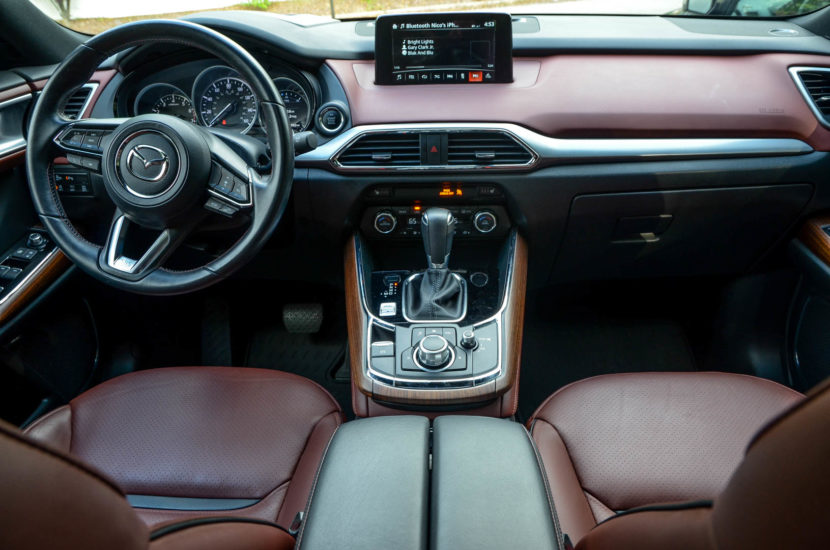
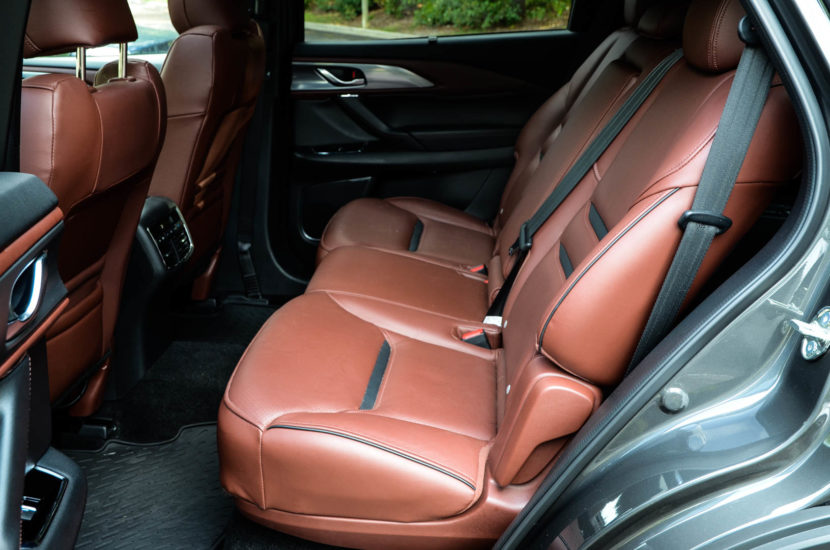
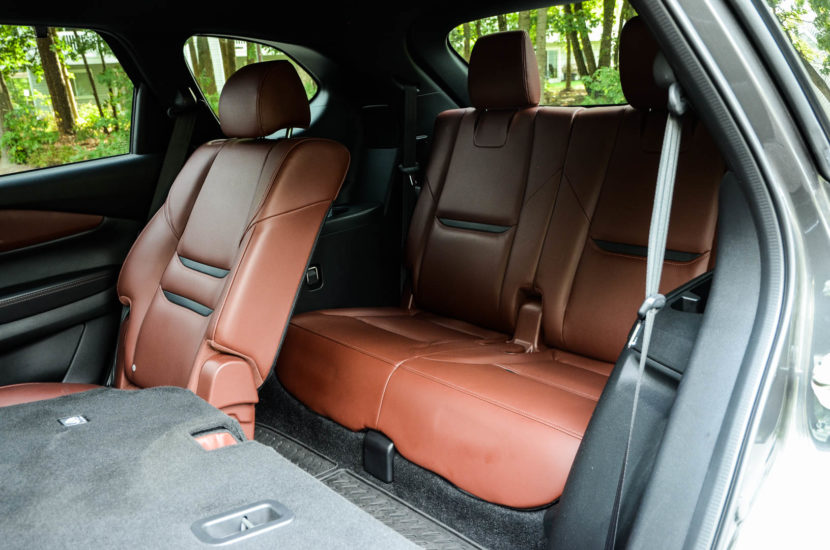
Mazda’s infotainment system is also really impressive. Is it BMW iDrive level? No, absolutely not. But it’s better than almost any other brands’ I’ve used. It’s better than Lexus’ odd touch-pad thing, far better than Cadillac’s CUE system and far more advanced than anything you’ll see from Honda or Toyota. Though, you can actually tell that Mazda looked to BMW’s iDrive for inspiration, as it functions in a similar way. There’s a rotary controller on the center console, with redundant function buttons surrounding it, and the way its menus work is similar as well. It’s not as intuitive, nor are the graphics anywhere near as good as the latest iDrive. Though, it works well enough and is easy to use.
However, if the Mazda CX-9 is going to win over customers from more premium brands, it’s not going to do it with its interior luxury or technology. If Mazda wants to steal premium customers away from more traditional brands with its CX-9, it’s going to do it with how it drives.
Under the hood lies a 2.5 liter turbocharged four-cylinder engine that makes 250 hp (with 91 octane gas, 227 hp with 87 octane) and 310 lb-ft of torque. That engine is paired with a six-speed automatic gearbox and all-wheel drive. The engine is smooth, punchy and torquey enough to move the big CX-9 with verve. It’s not the fastest SUV on the road, doing 0-60 mph in about 7.2 seconds, but it feels quick enough off the line and is certainly punchy enough to handle daily traffic. While it’s smooth overall, it sounds a bit gruff at higher rpms. Though, three-row luxury SUVs aren’t exactly designed to be sonorous.
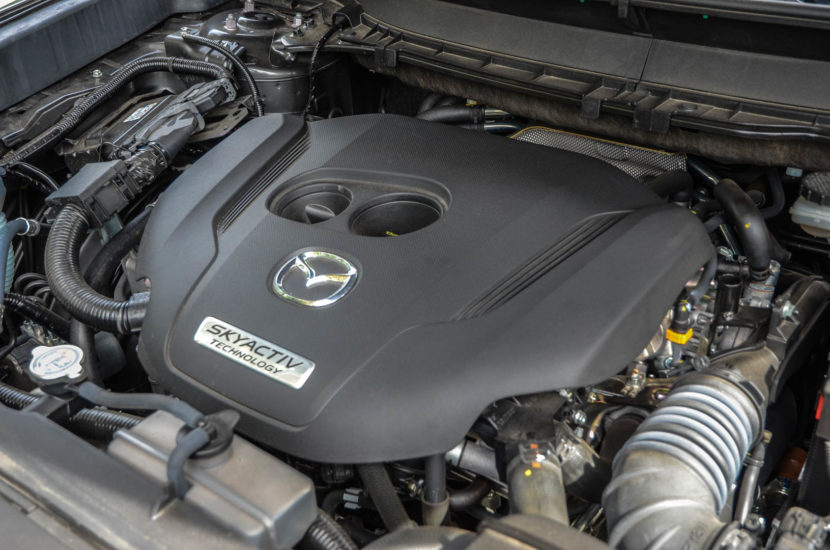
If there’s a complaint with the powertrain, it’s the transmission. While perfectly adequate, it’s just not great. It shifts smooth and is usually in the right gear, so it’s not bad by any means. It just feels like a big misstep by Mazda. There’s a great eight-speed automatic by Aisin that’s designed for front-drive-based vehicles, the very same one used in the BMW X1, that Mazda could have easily used. Instead, it used a six-speed auto that isn’t as smooth or as fast as the Aisin eight-speed. Plus, the latter would help improve efficiency as well as performance. Overall, it’s a fine powertrain and one that no customer will complain about. I just wish Mazda would have gone with an eight-speed unit.
But much like the Mazda MX-5, the CX-9 isn’t about its powertrain. It’s about the way it drives and the way it feels. In terms of chassis dynamics, steering, braking and ride, the Mazda CX-9 is up there with the best on the market. I know it’s odd to talk about the handling of a three-row SUV but the Mazda CX-9 has some serious moves for such a large car. The front end is quick and responsive while the chassis is balanced and actually dynamic, which really surprised me, given the size of the car. Mazda also deserves praise for its ride quality. It’s supple and comfortable, while also having very little body roll or brake dive. It’s remarkably planted and stable while also being comfortable, quiet and luxurious. Mazda has done a great job with the suspension tuning of the CX-9. It’s a genuinely fantastic driving SUV.
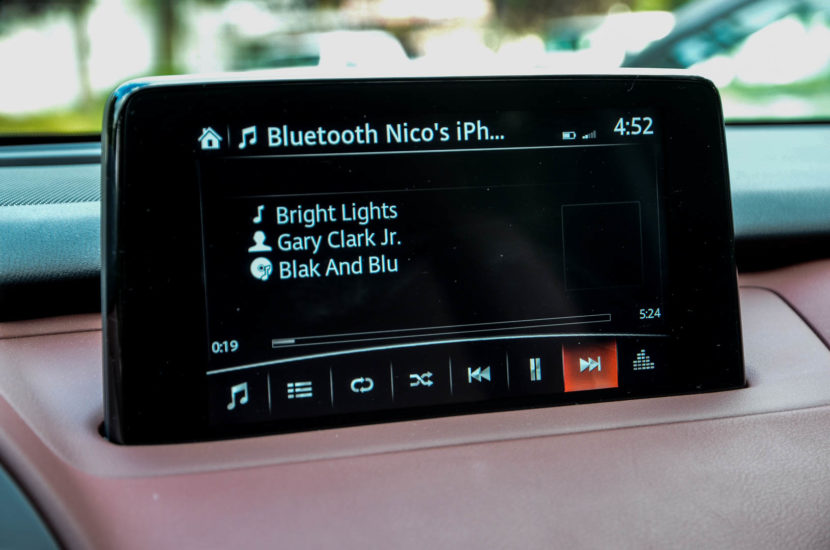
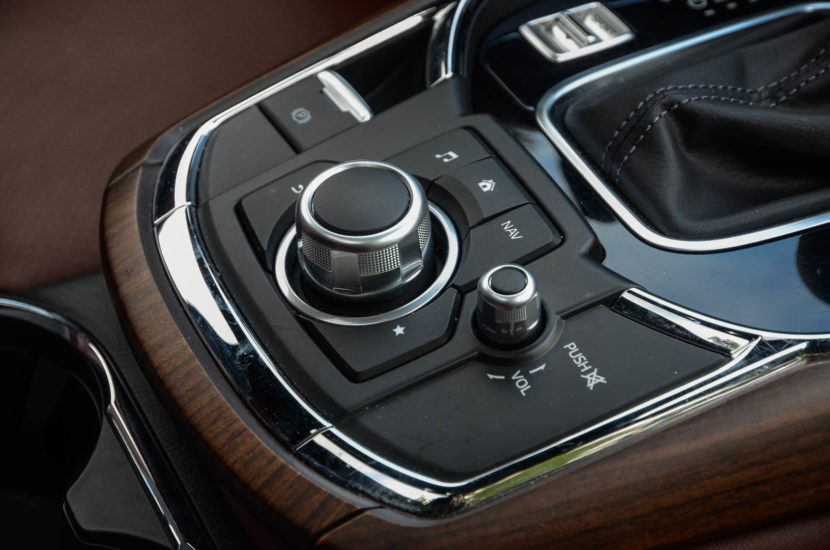
The best part of the CX-9, though, is its steering. The weight is a bit light and the rack is a bit slow, requiring a decent amount of steering lock to go ’round corners, but it is a massive SUV designed to be comfortable. So it makes sense. What makes it special though is its accuracy and genuine steering feel. You can really feel what the front wheels are doing and it goes exactly where you point it. It’s certainly one of the best steering SUVs I’ve ever driven and is right up there with the BMW X5, maybe even better. It’s remarkable, it truly is.
During my time with the Mazda CX-9, it continued to impress. It was comfortable, quiet, luxurious but also enjoyable to drive. It has more than enough space for large families, looks good enough and has a luxury interior. But is it good enough to poach some BMW, Mercedes-Benz or Audi customers? I’m not quite sure it’s there yet. It’s a very good offering from Mazda and I wouldn’t be surprised it it steals away Acura and Lexus customers. In fact, there’s no chance I’d personally buy any Acura or Lexus over the CX-9. It’s that good to drive. Though, I’m not sure customers who are used to the extra level of luxury and technology that comes with more premium brands will want to make the switch to Mazda.
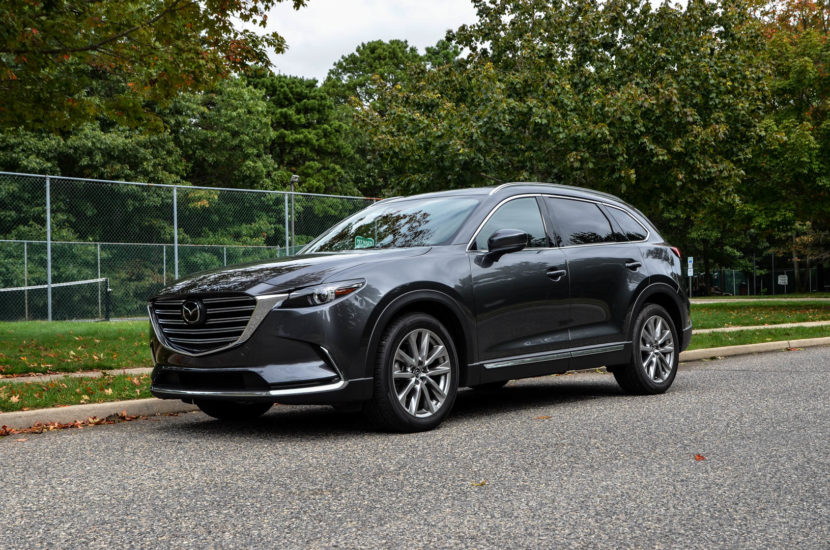
At $45,000, the Mazda CX-9 Signature offers a really impressive value proposition, as it comes with all the modern luxury and technology most customers will ever need while driving better than almost any SUV on the road. It also undercuts the rear-wheel drive BMW X5 by $11,000. So it’s better value than the X5, for sure. But someone used to X5-levels of luxury, performance, style and brand prestige likely won’t make that jump. Still, though, the Mazda CX-9 is a great car and proves that the brand deserves serious recognition from the world’s premium brands and their customers.


